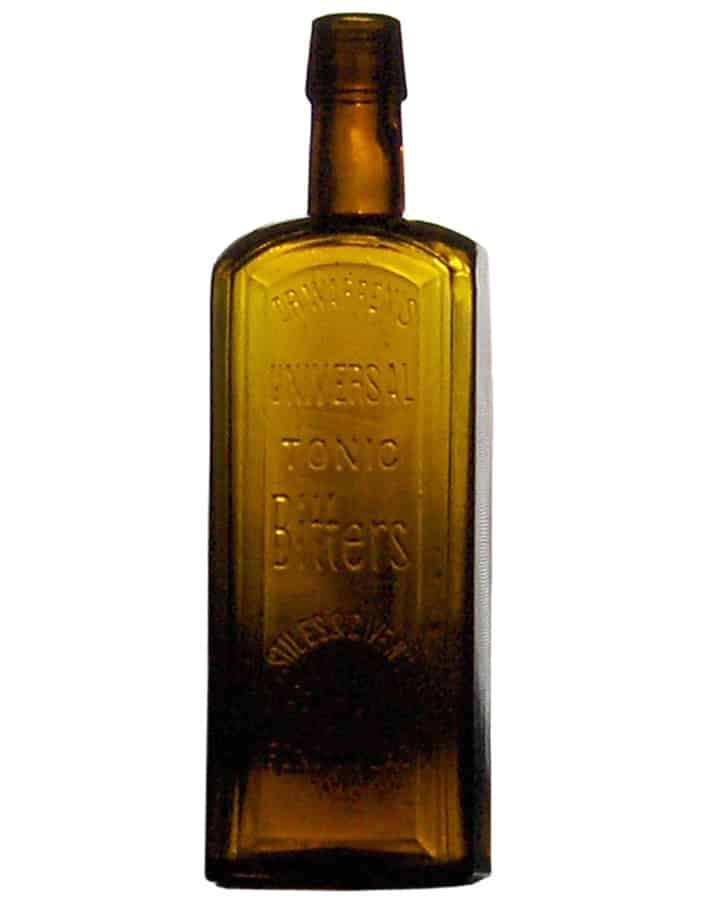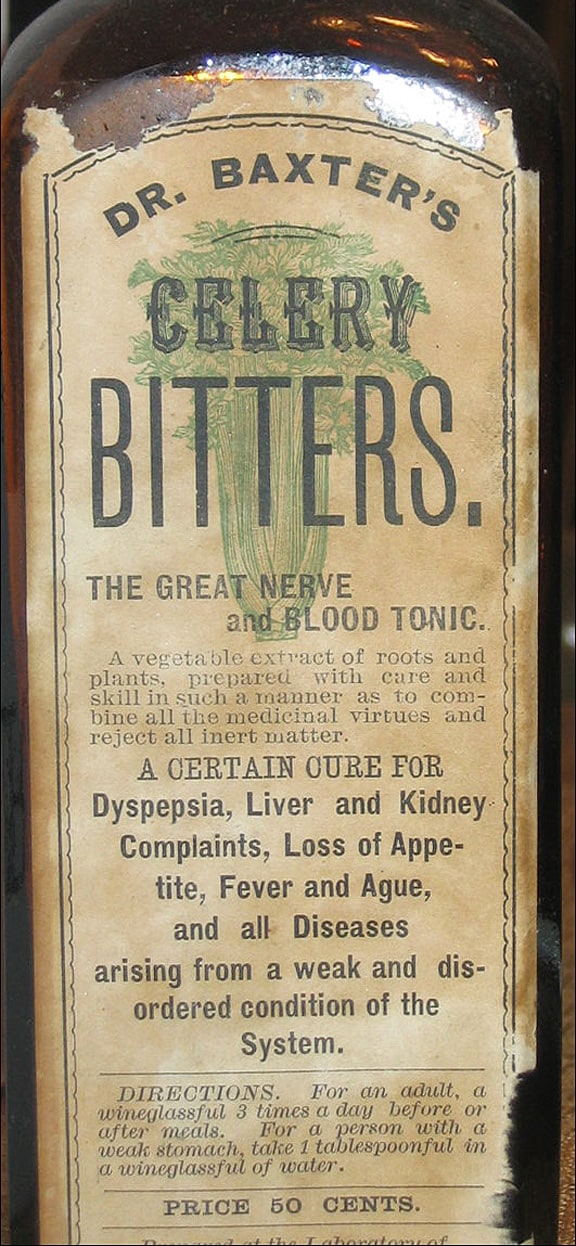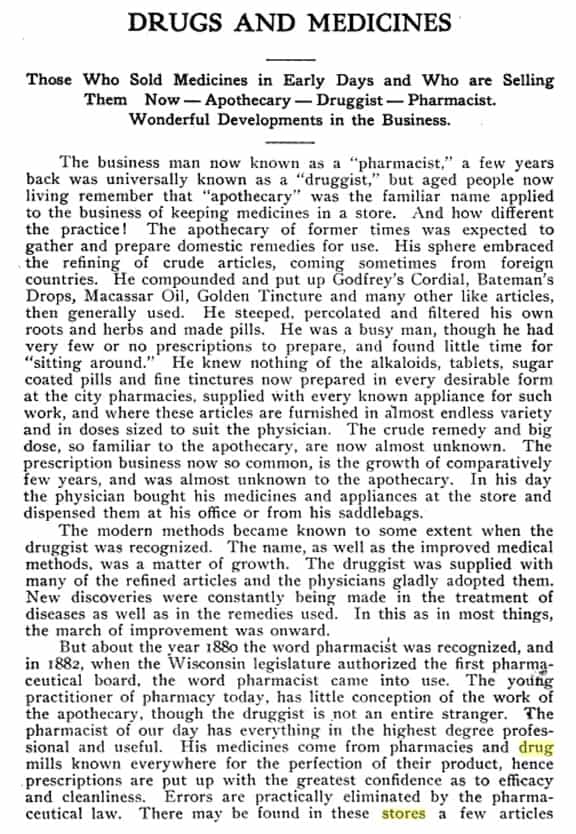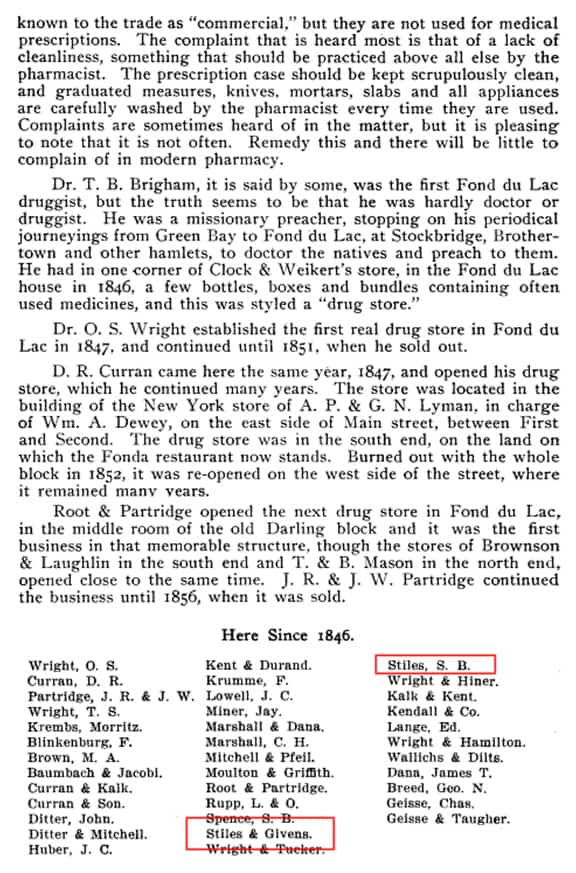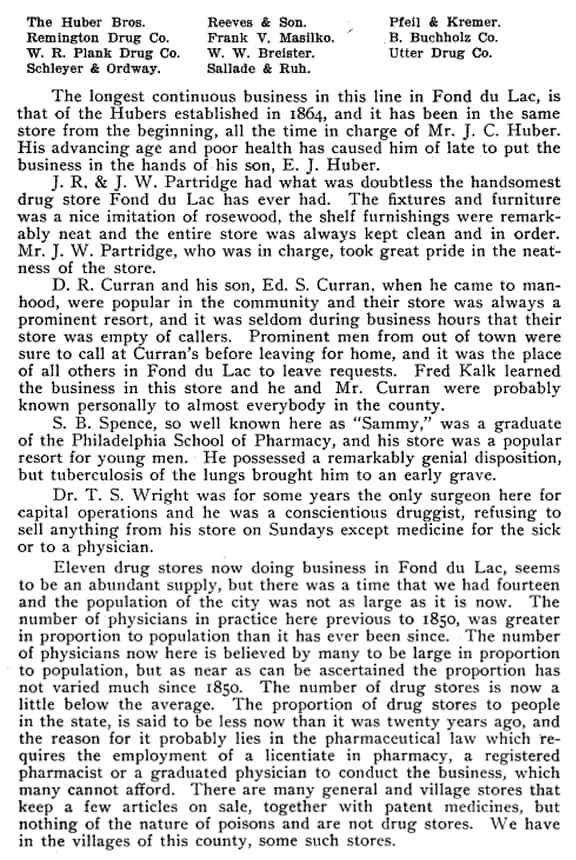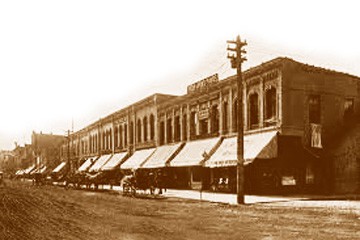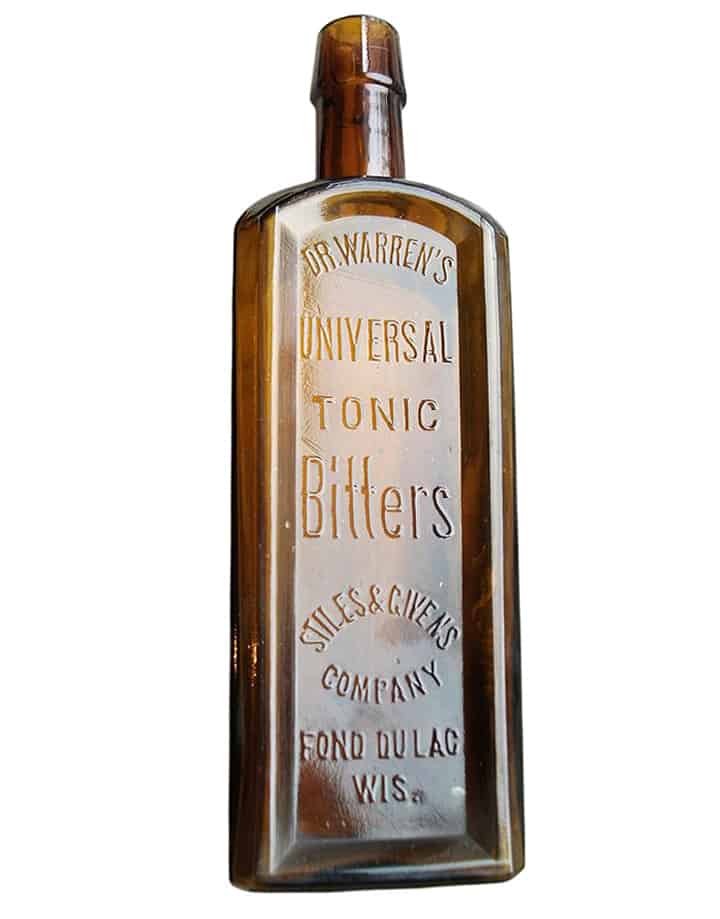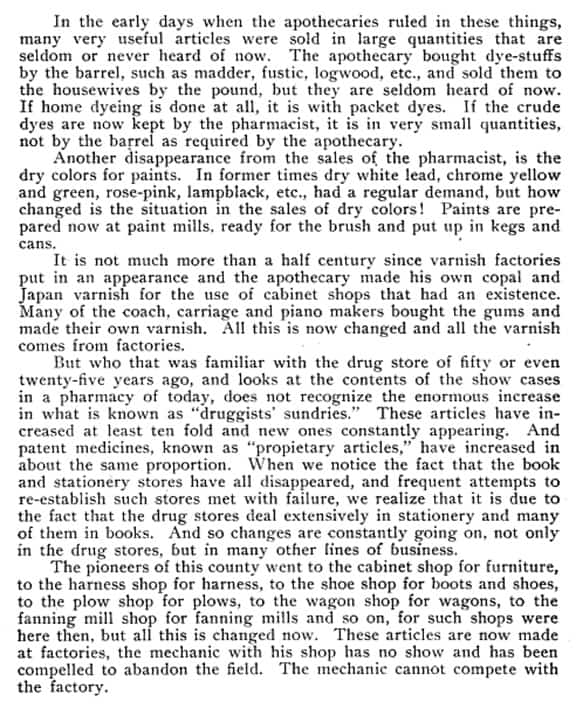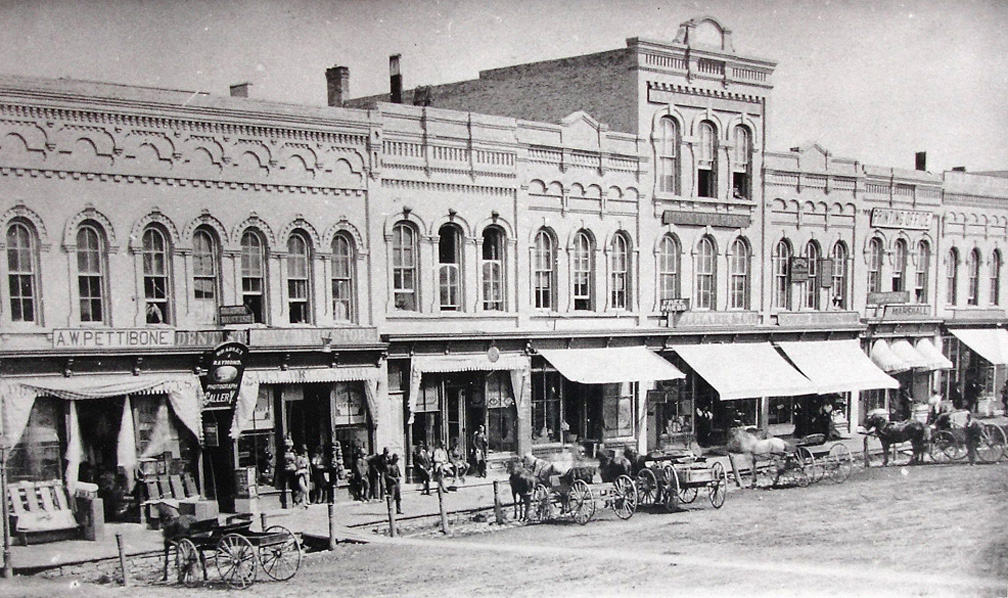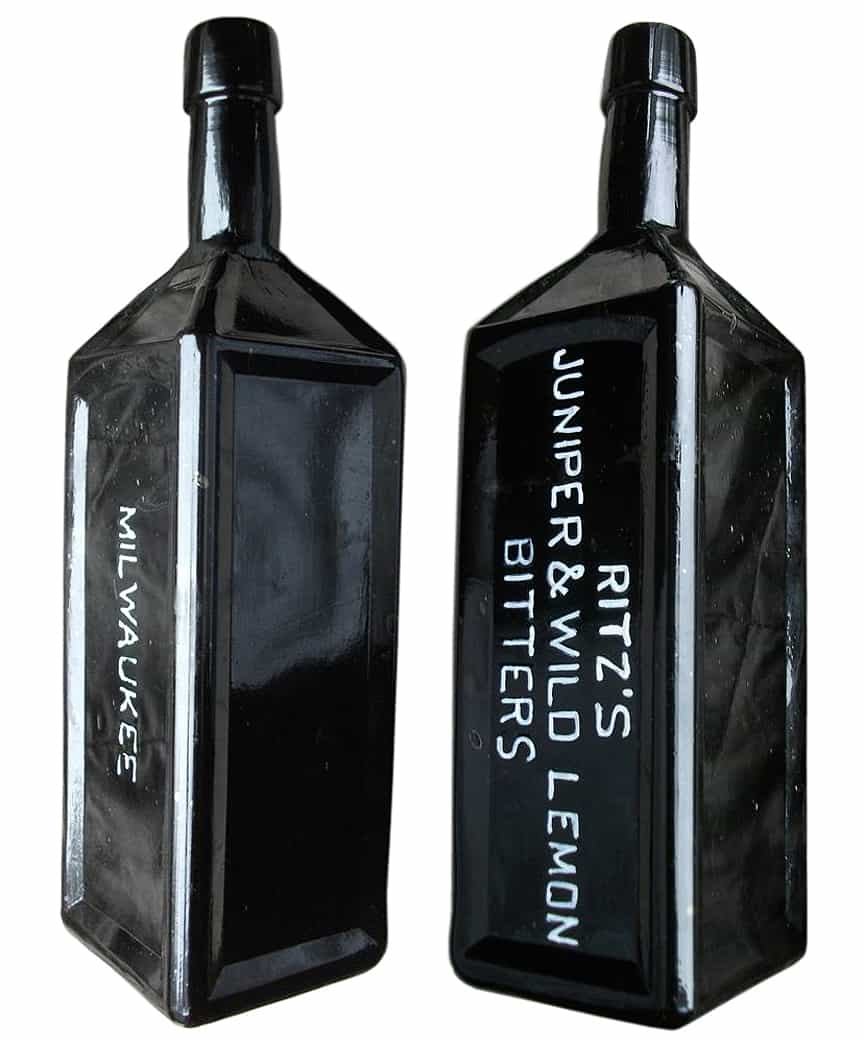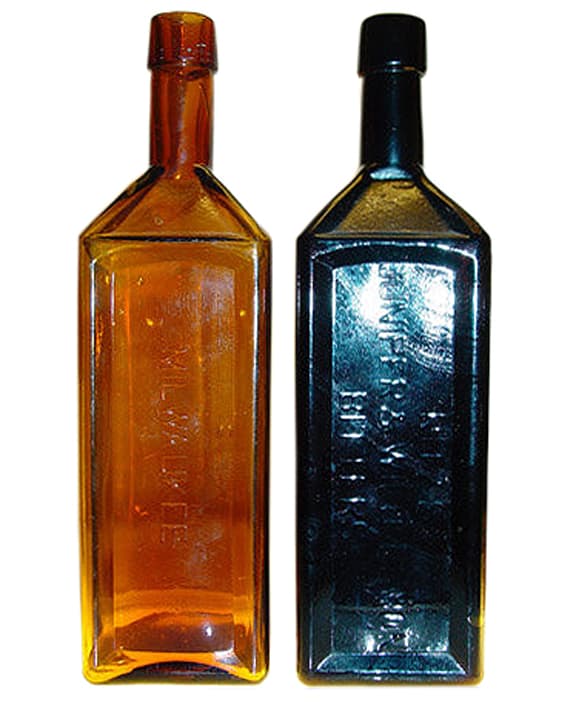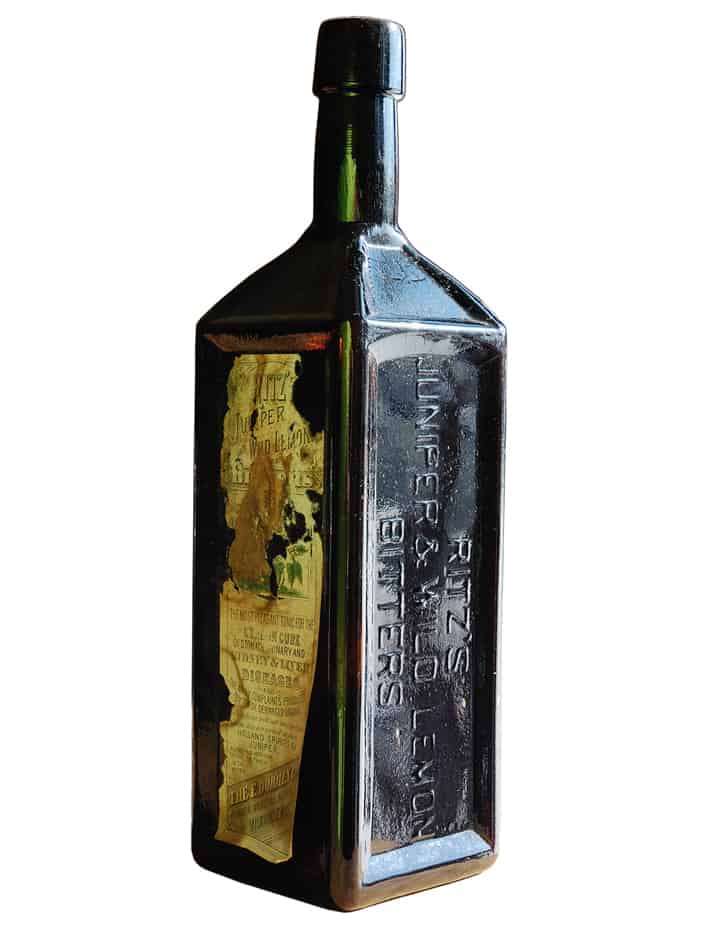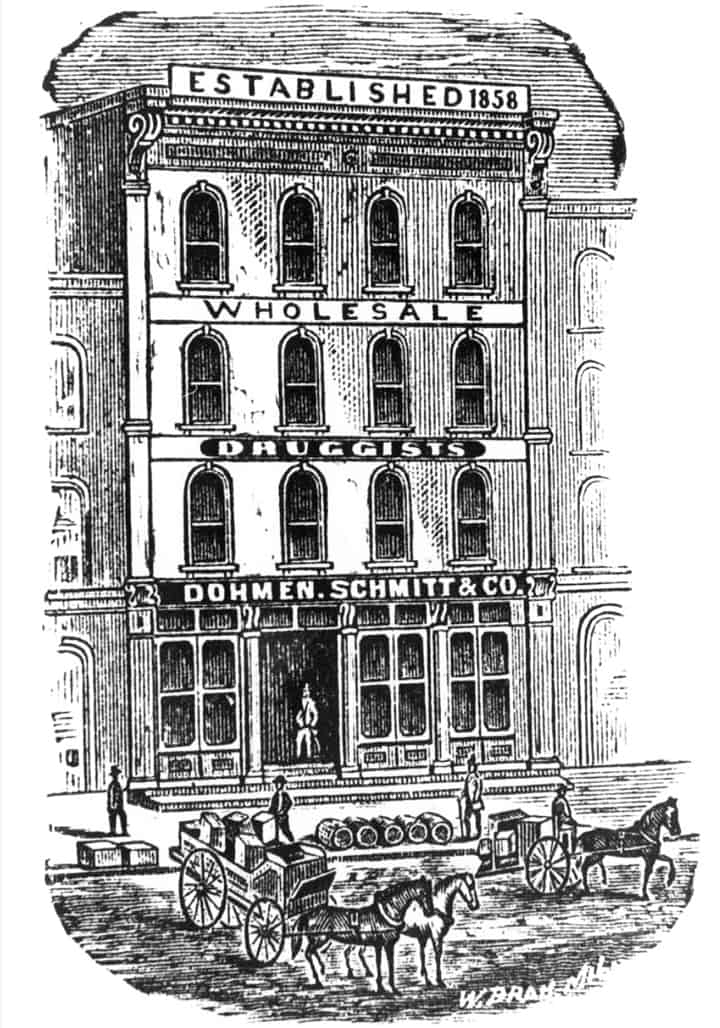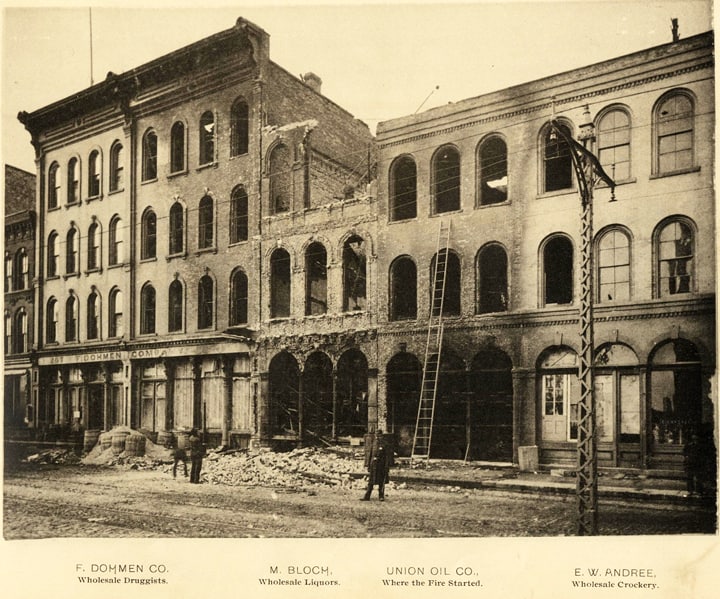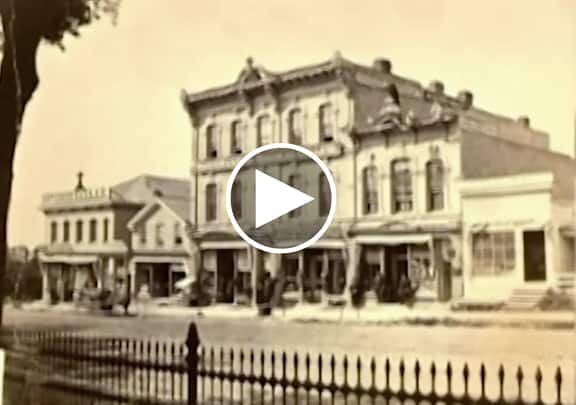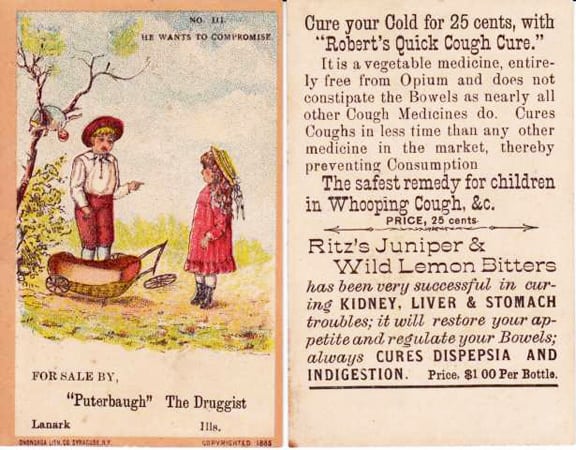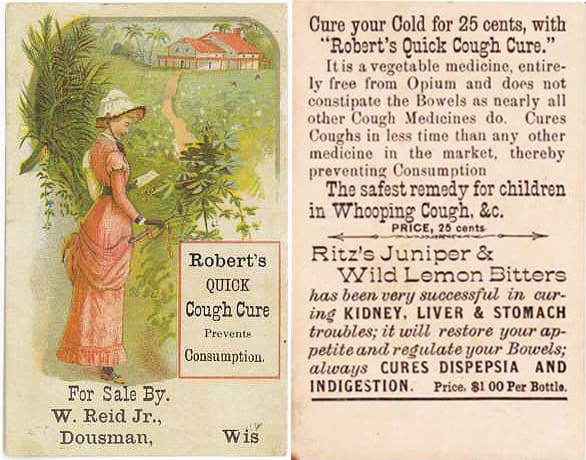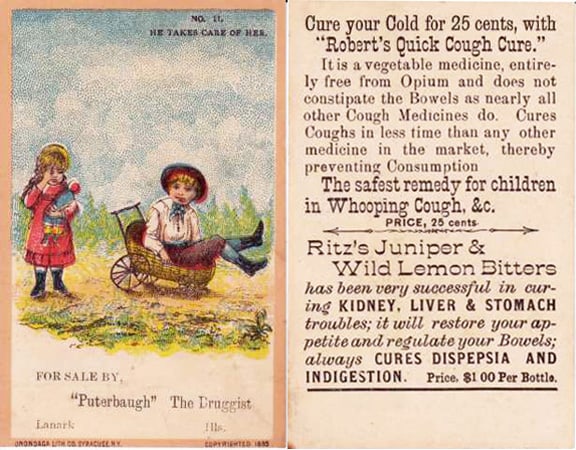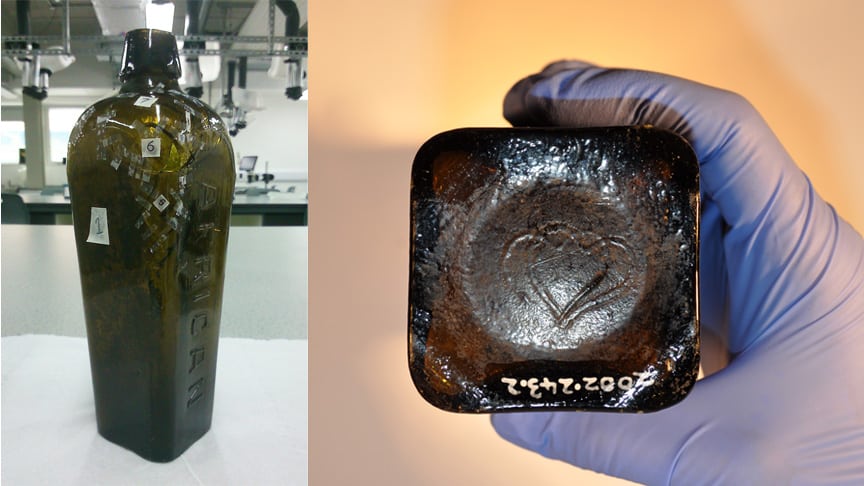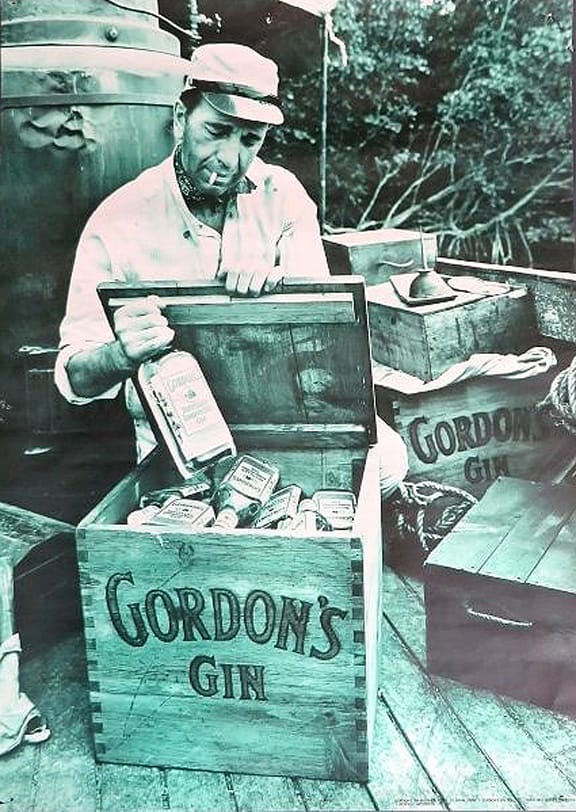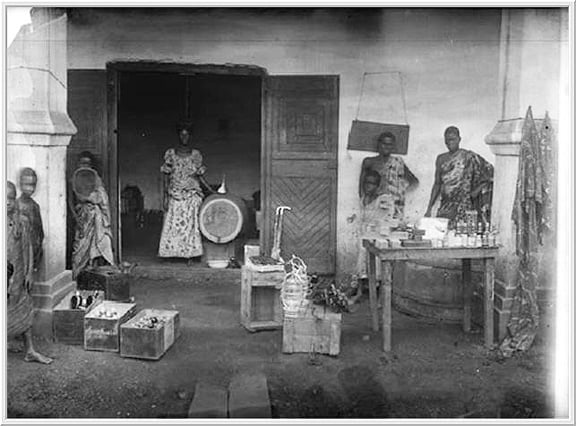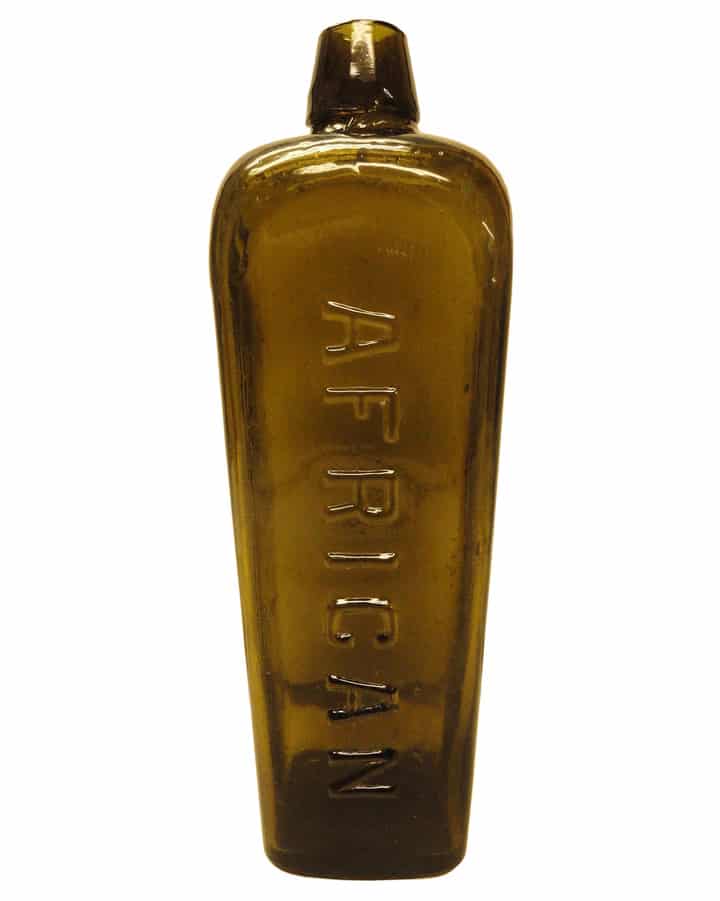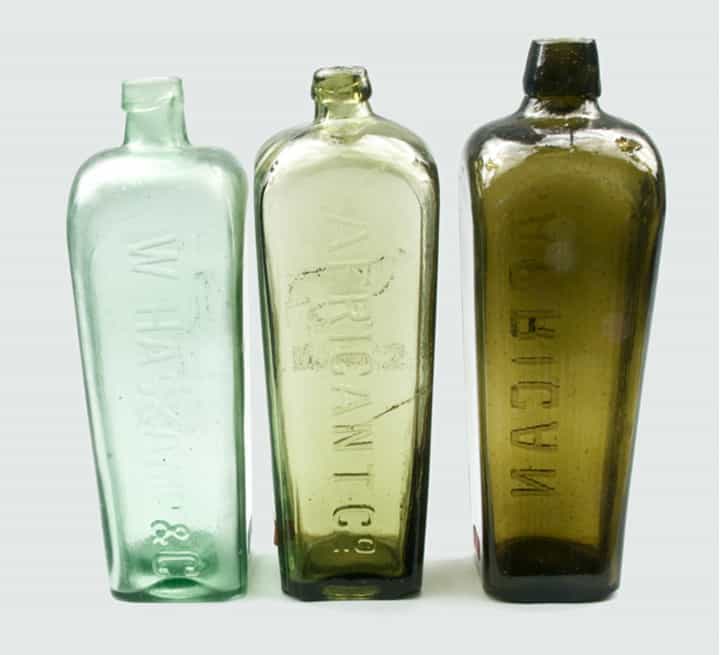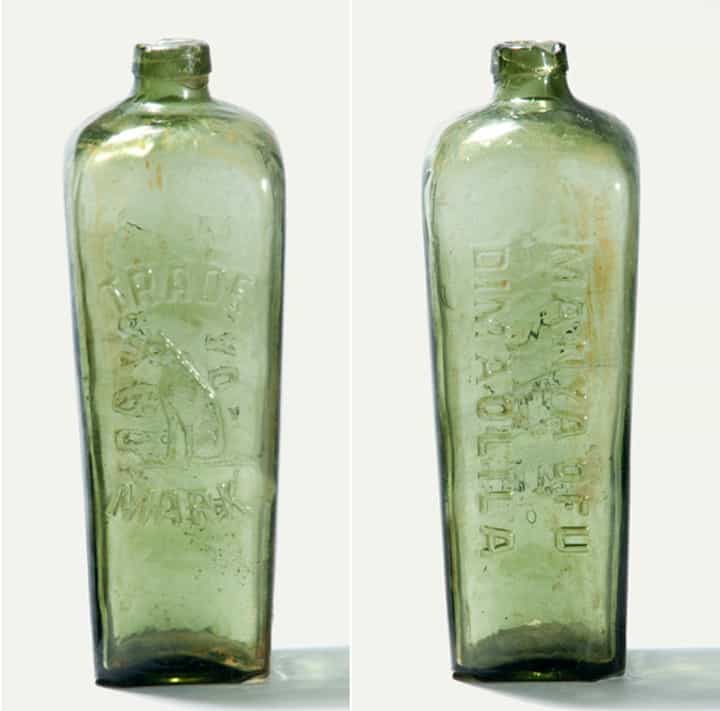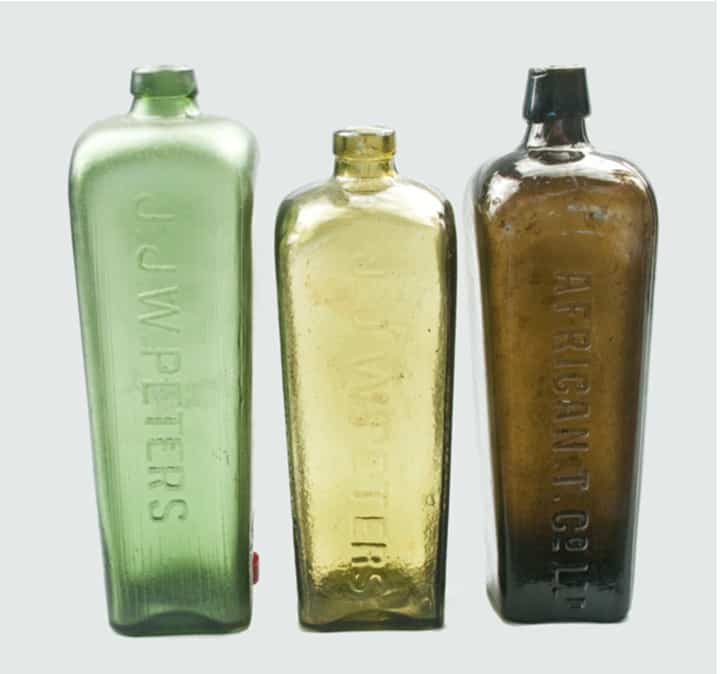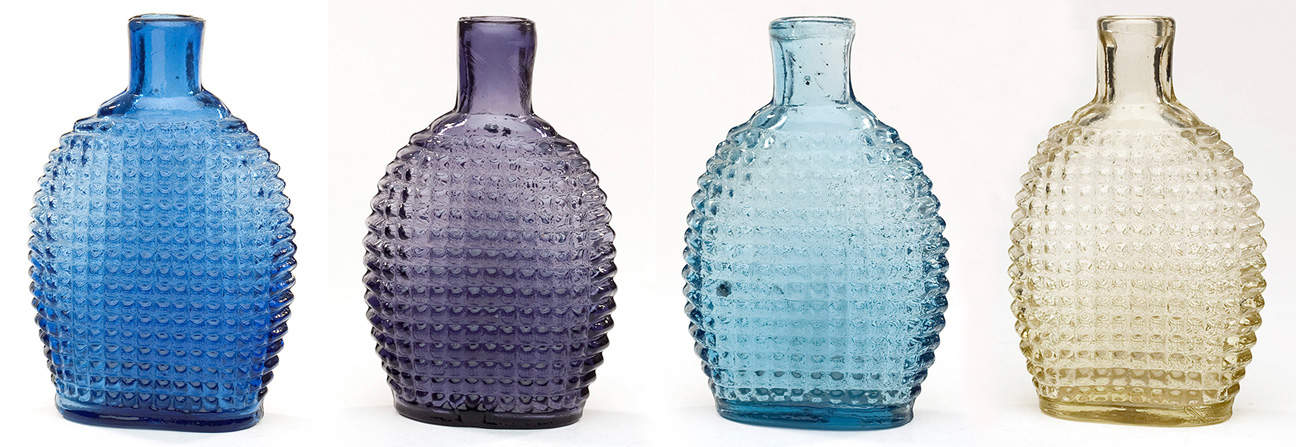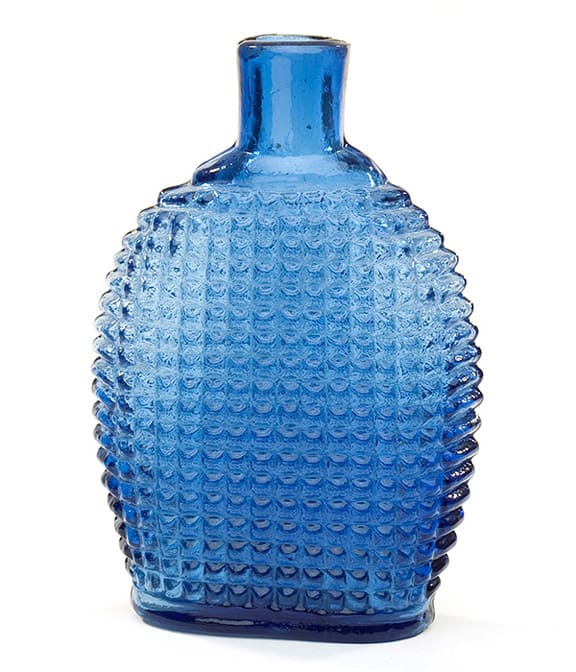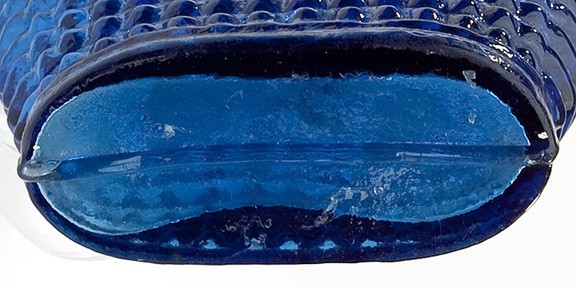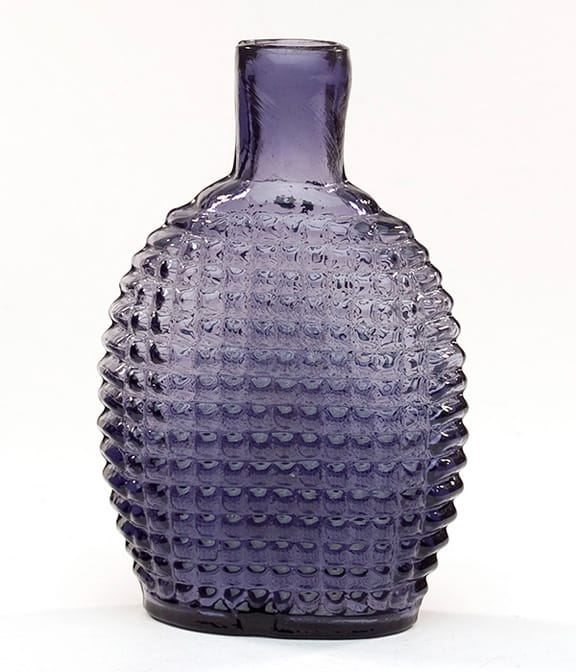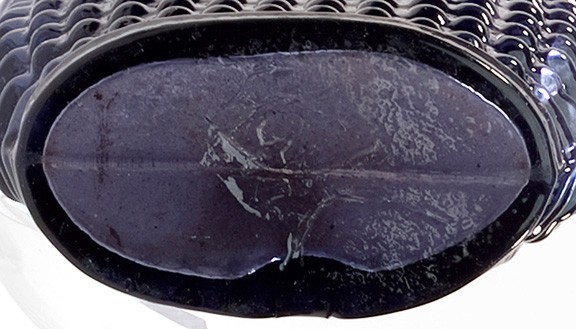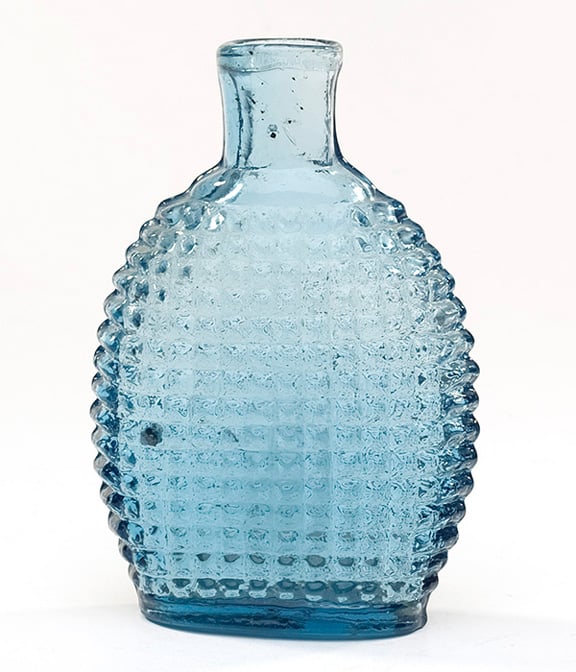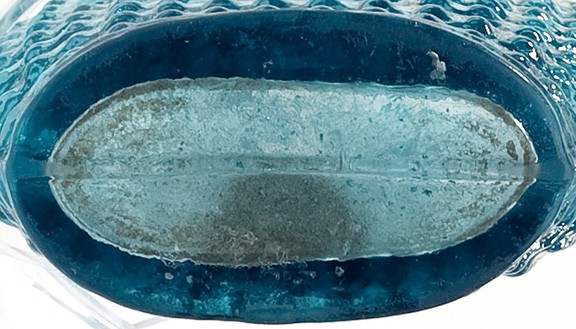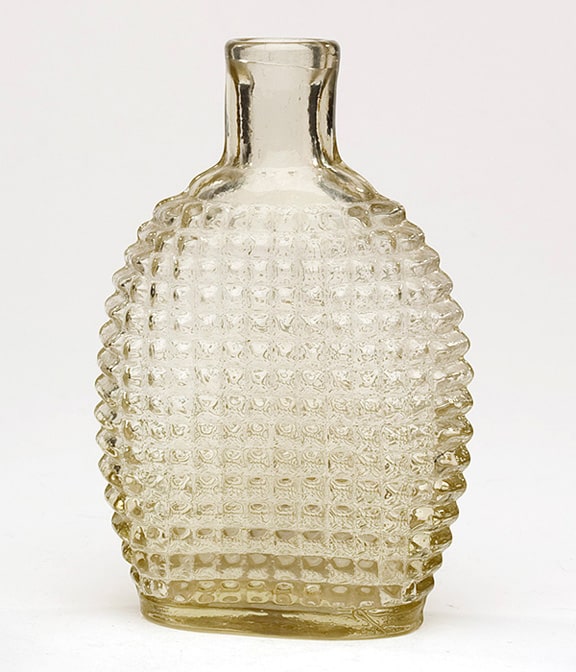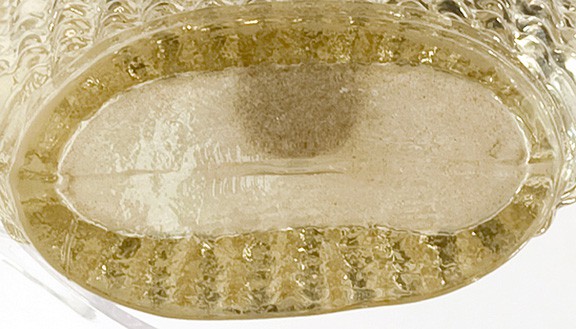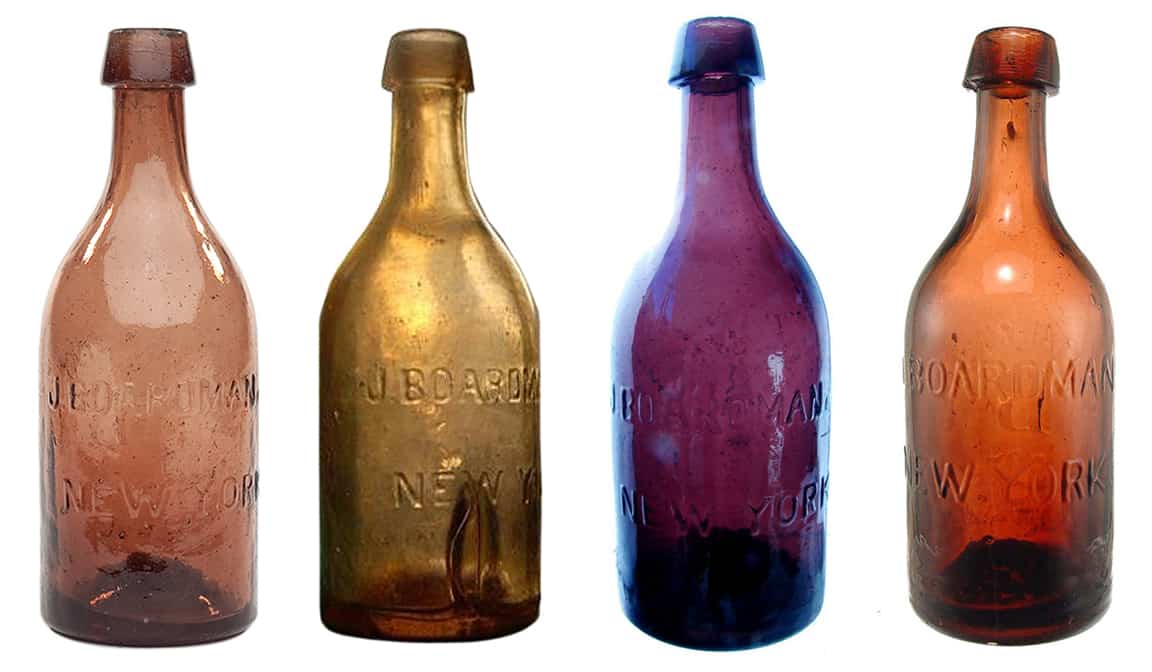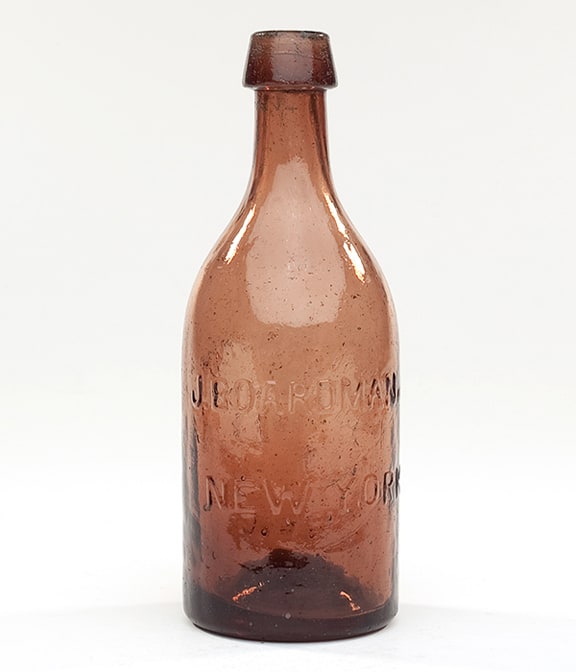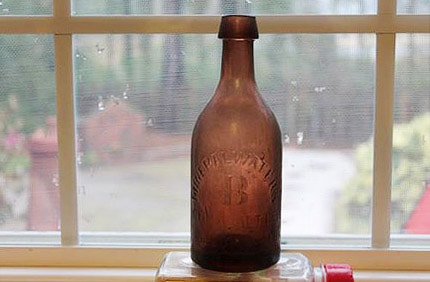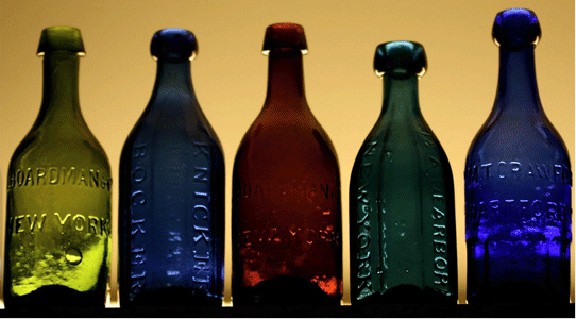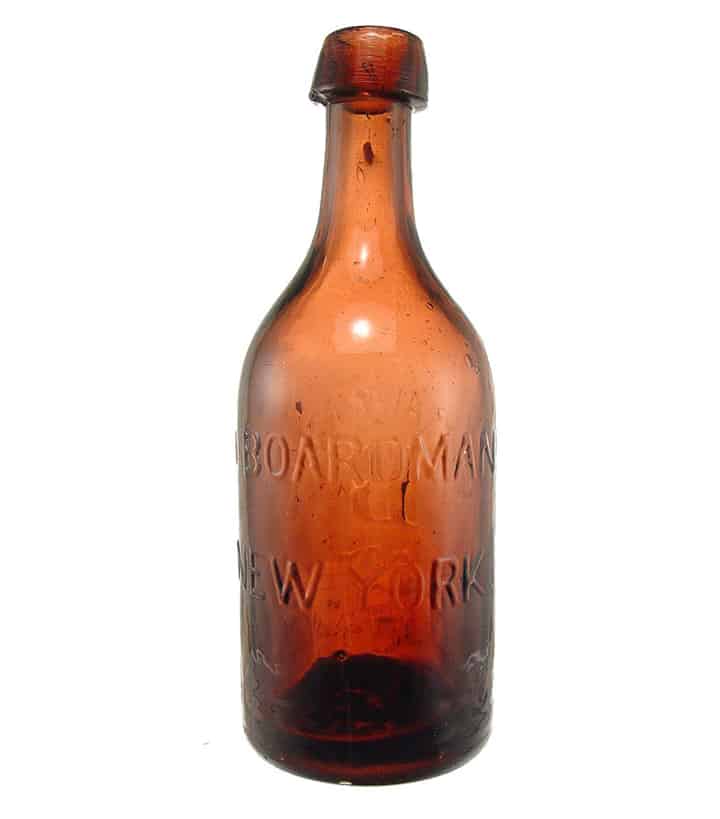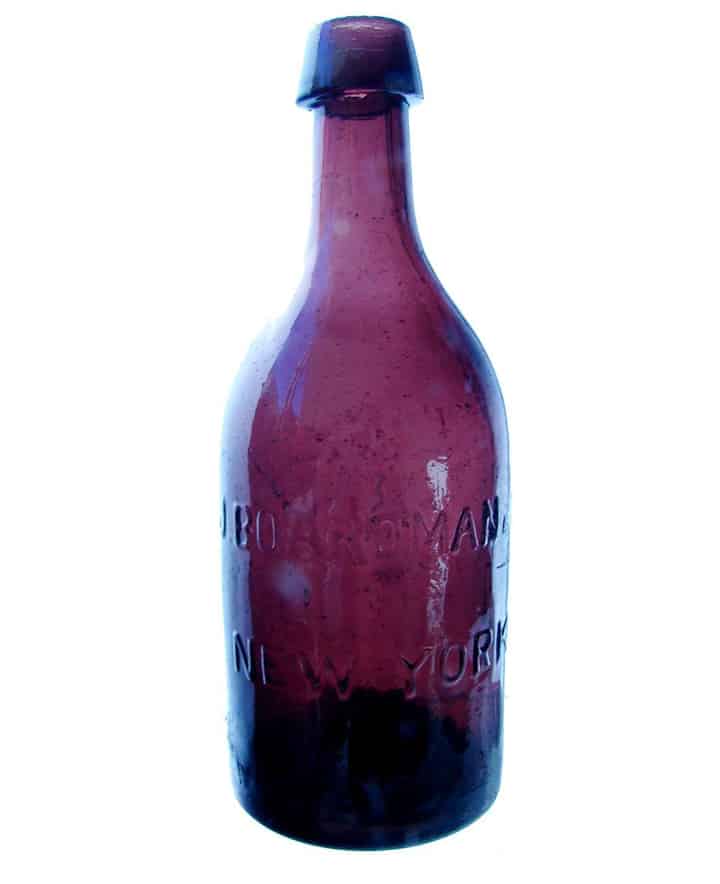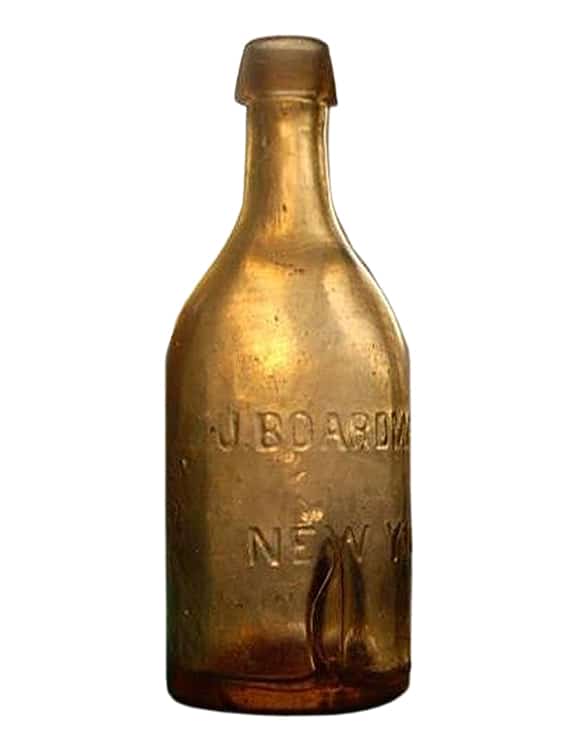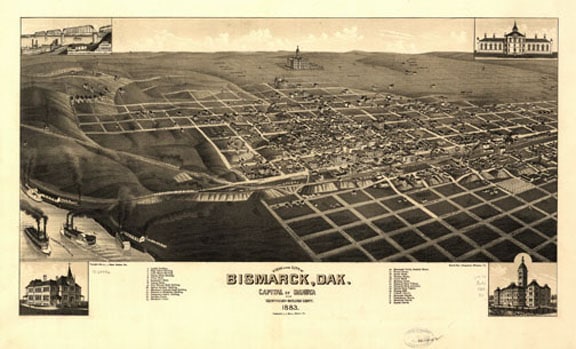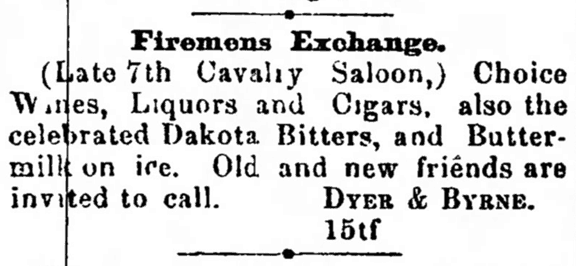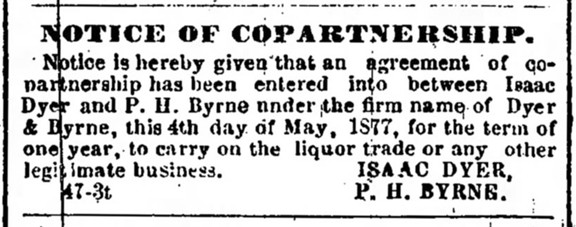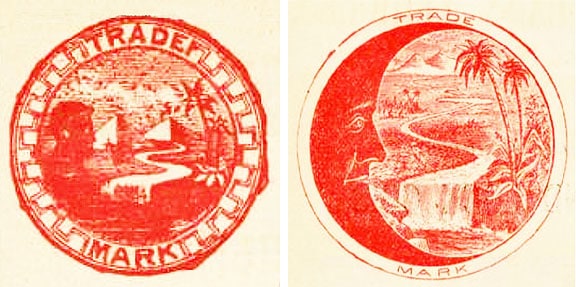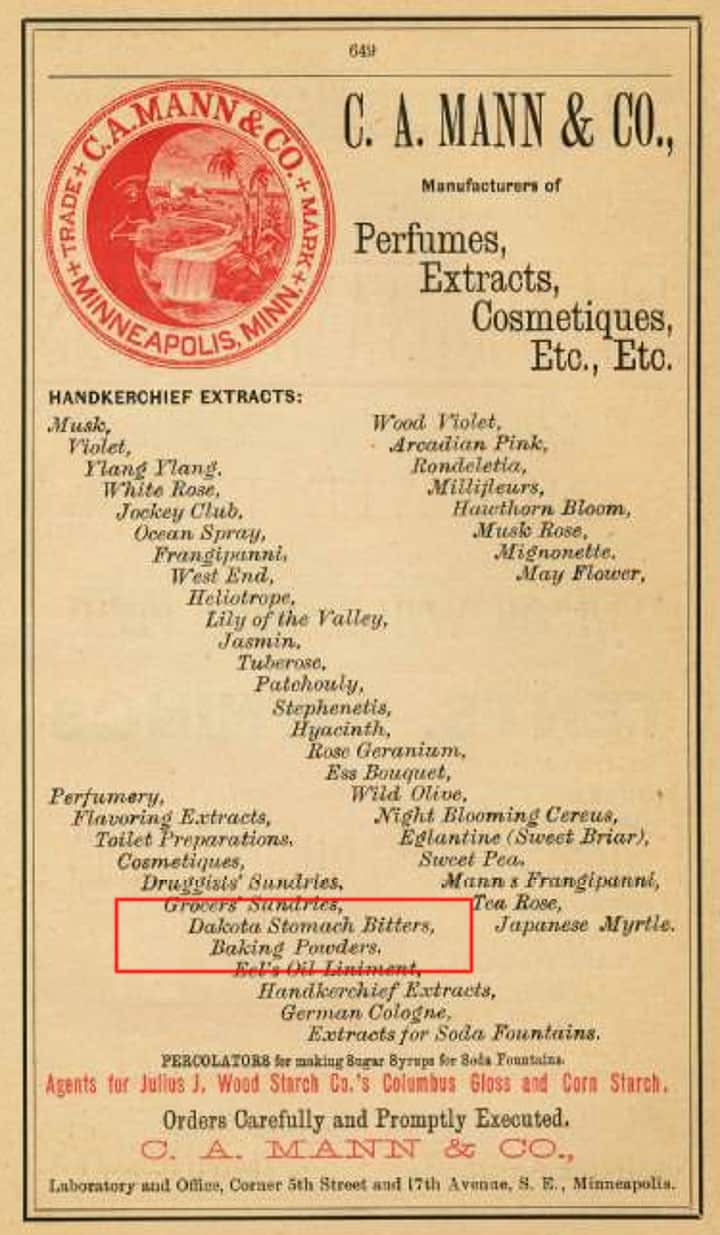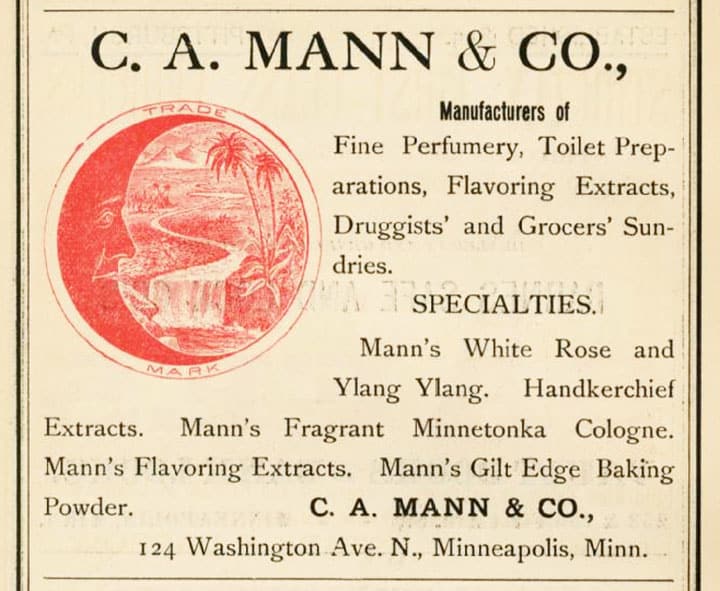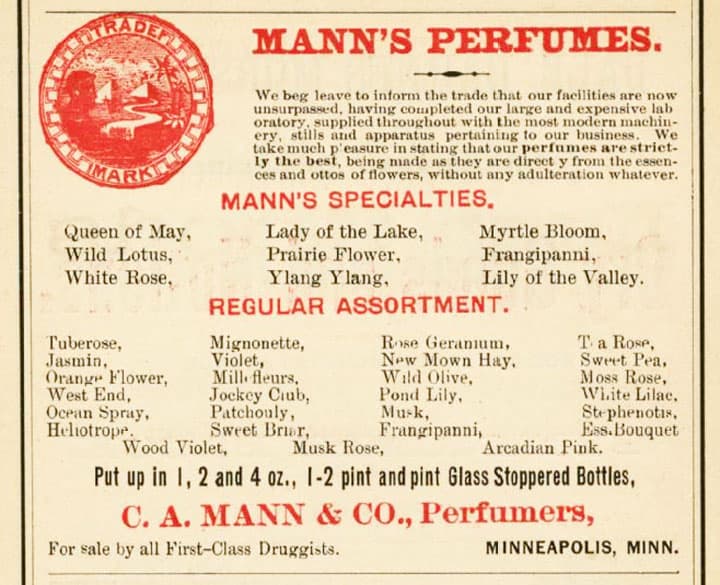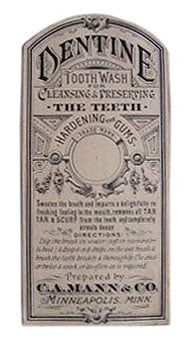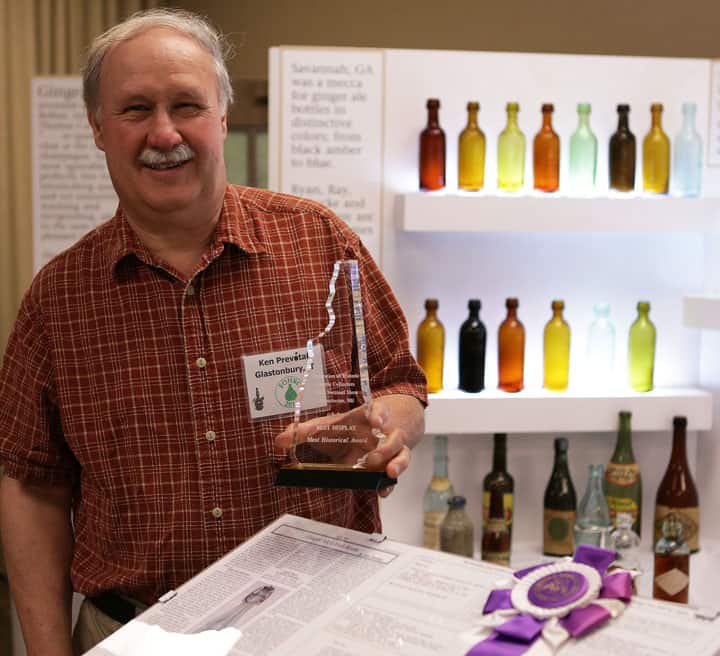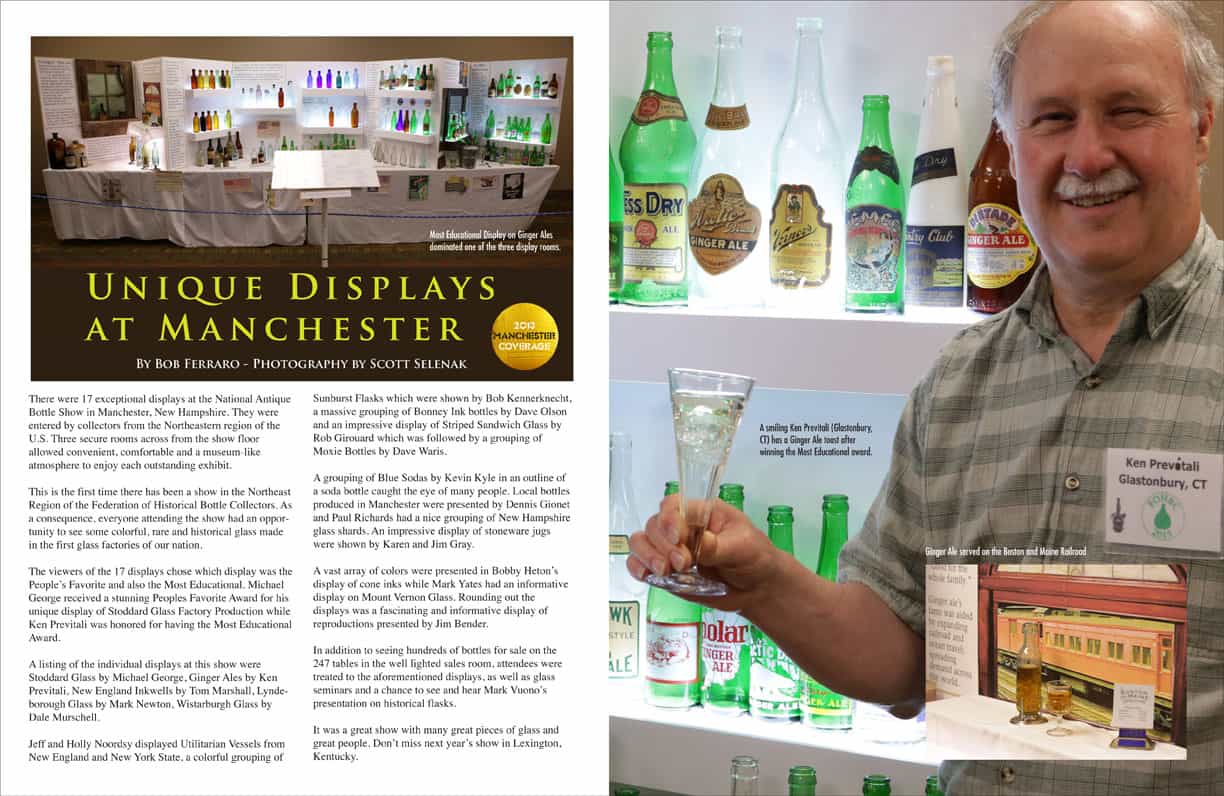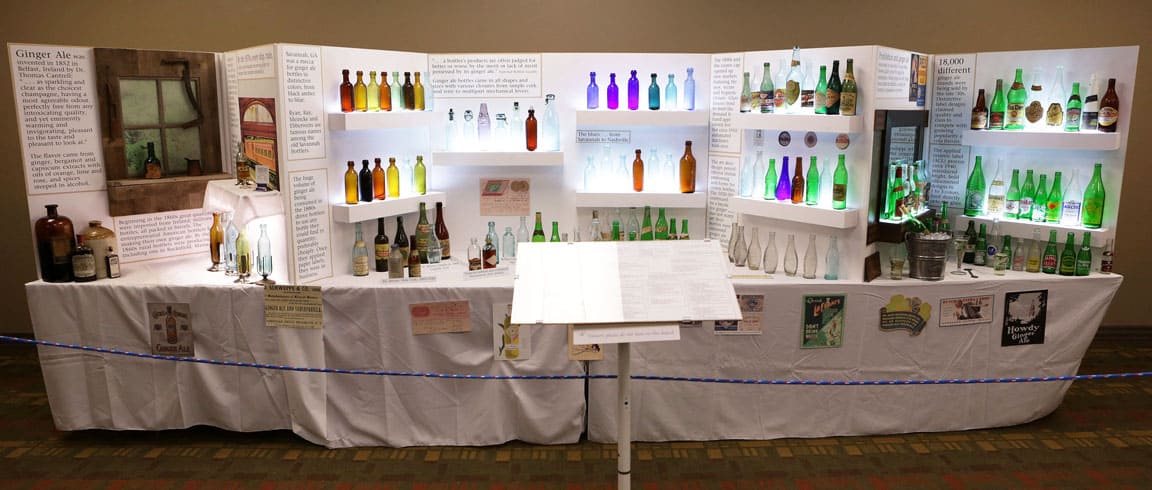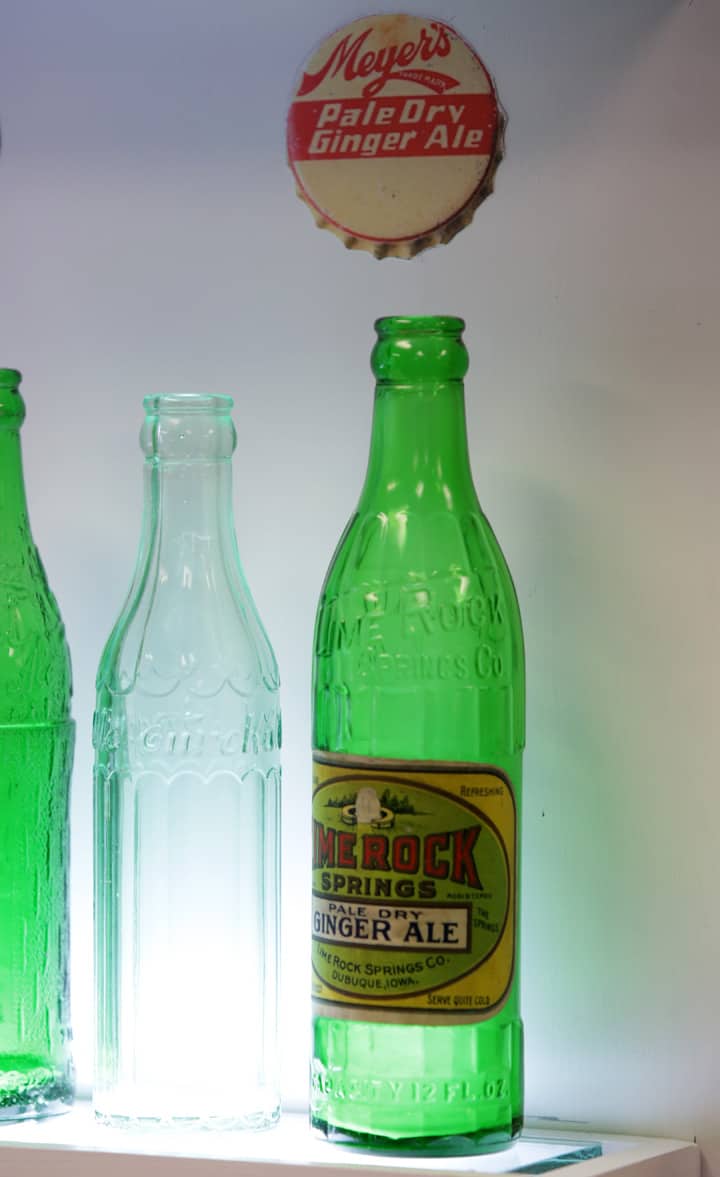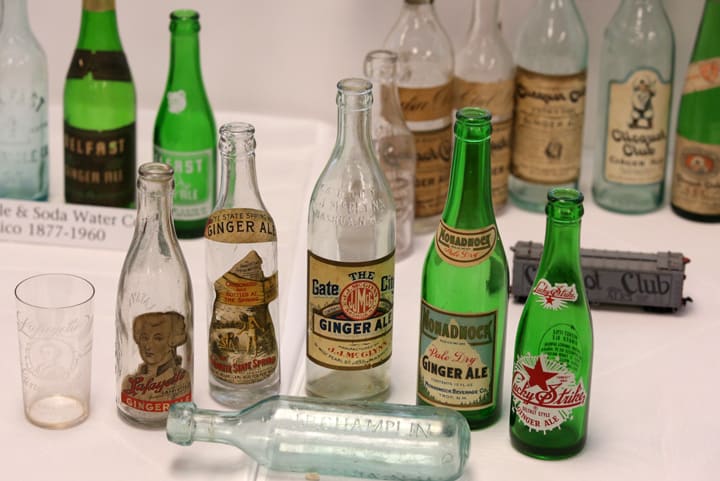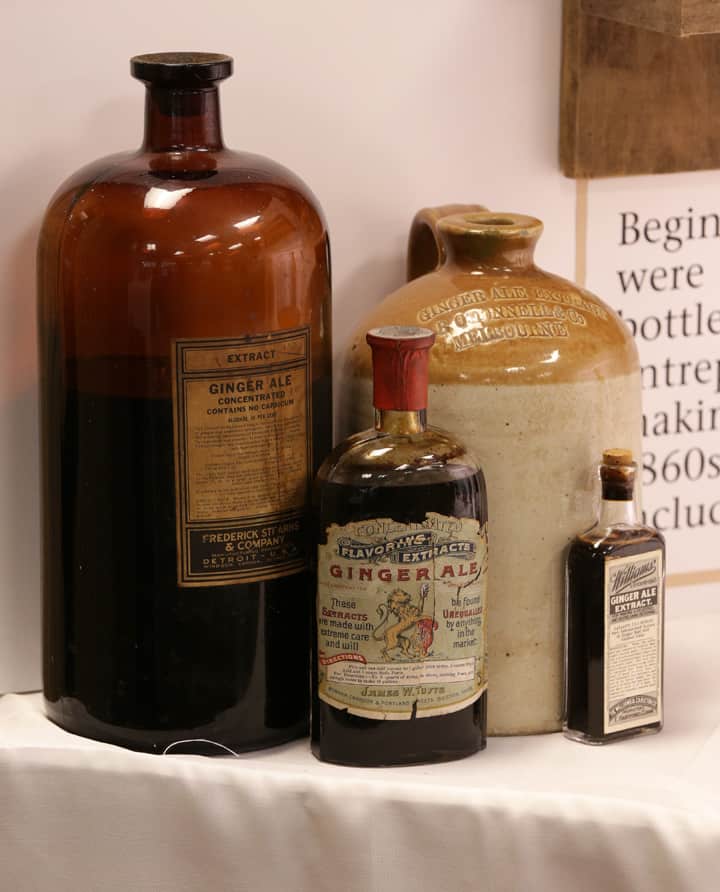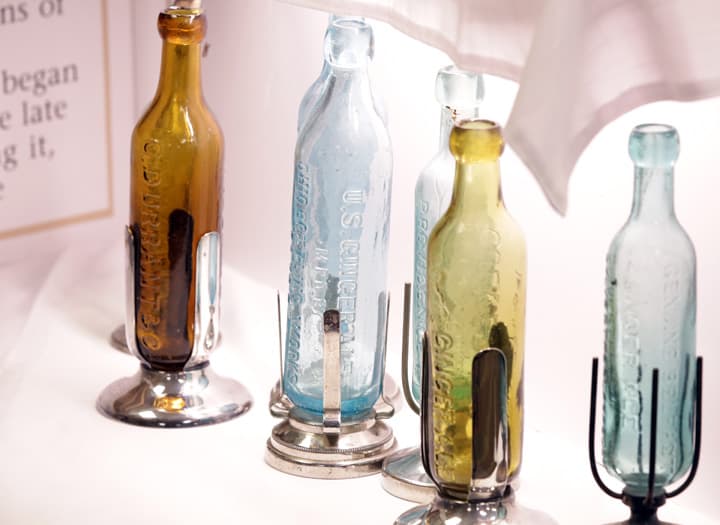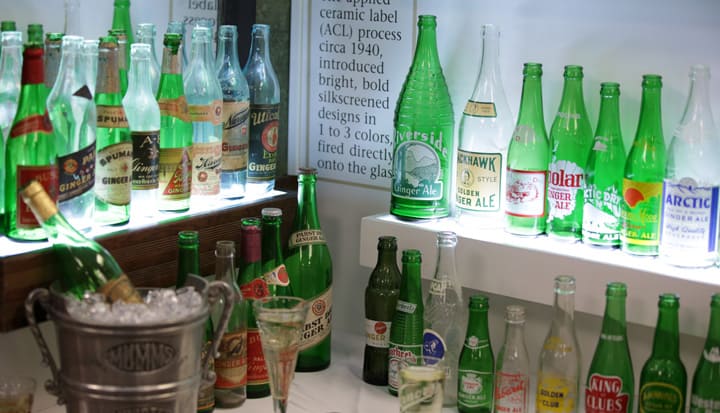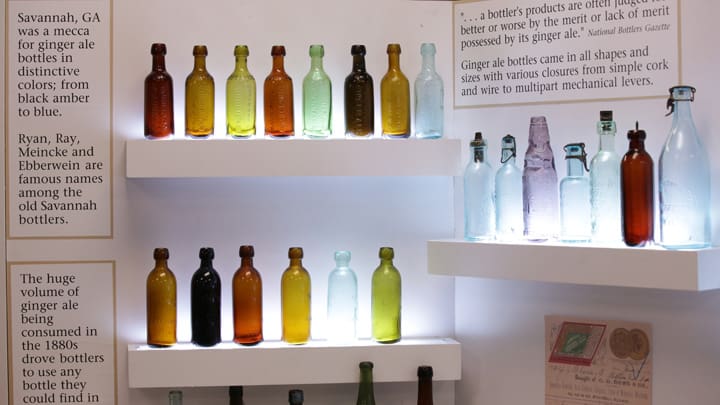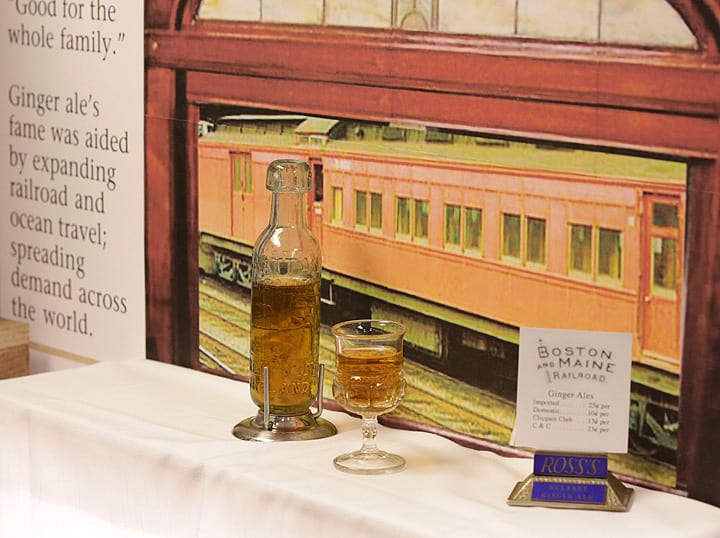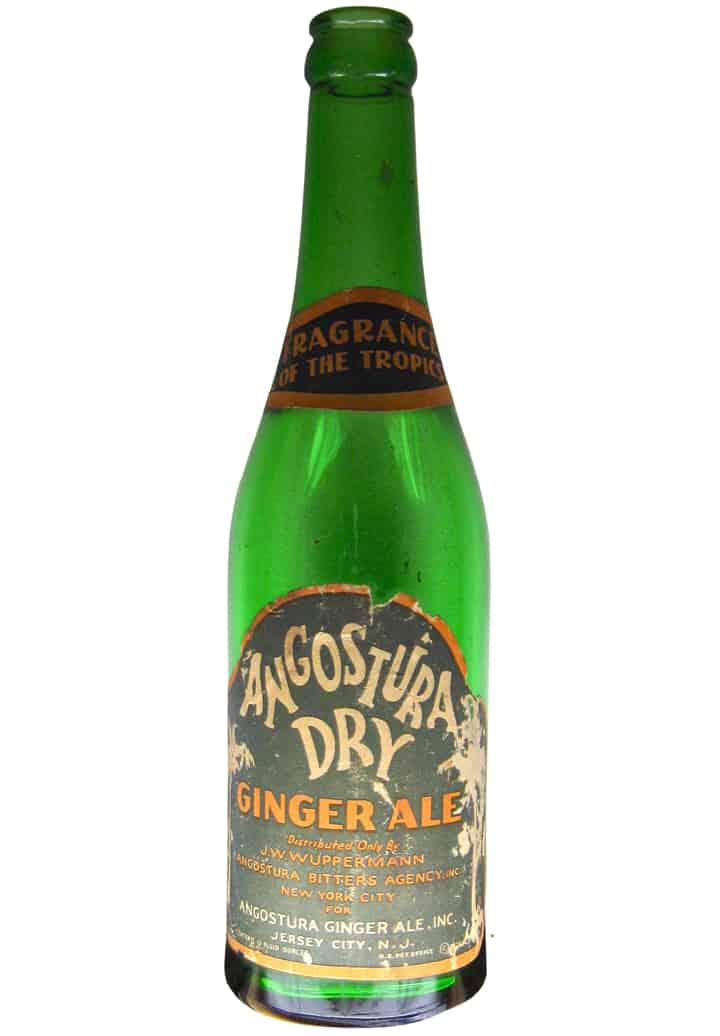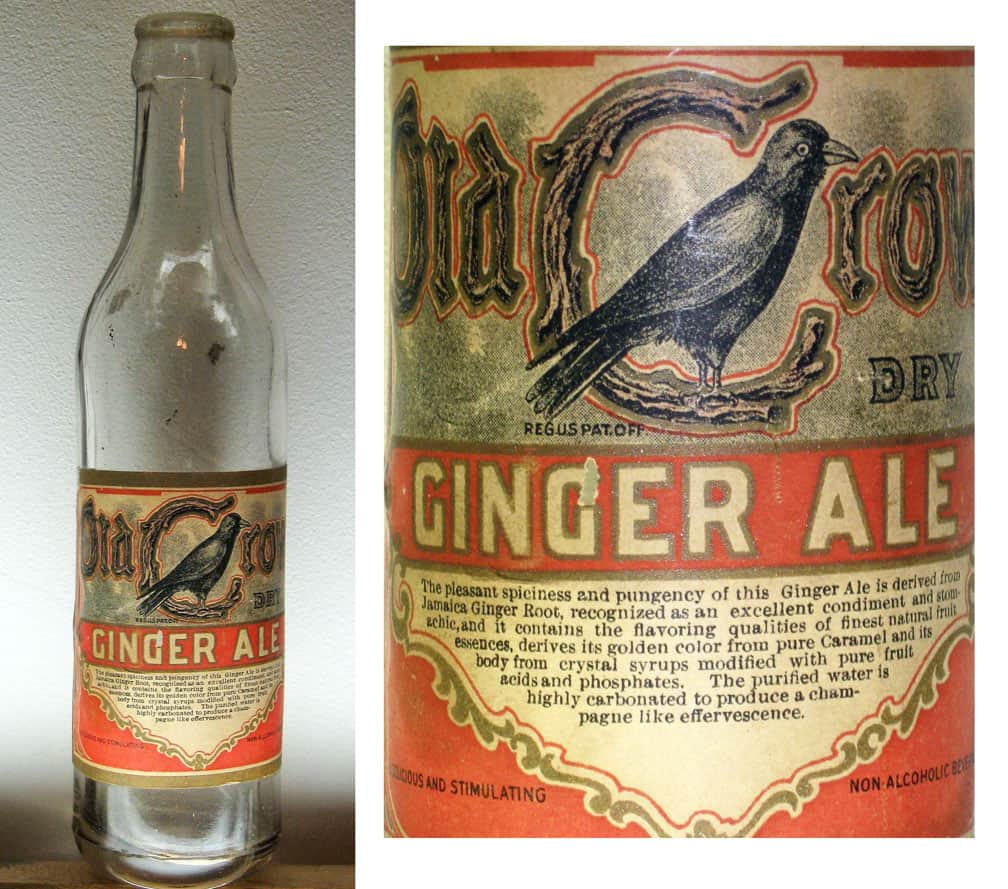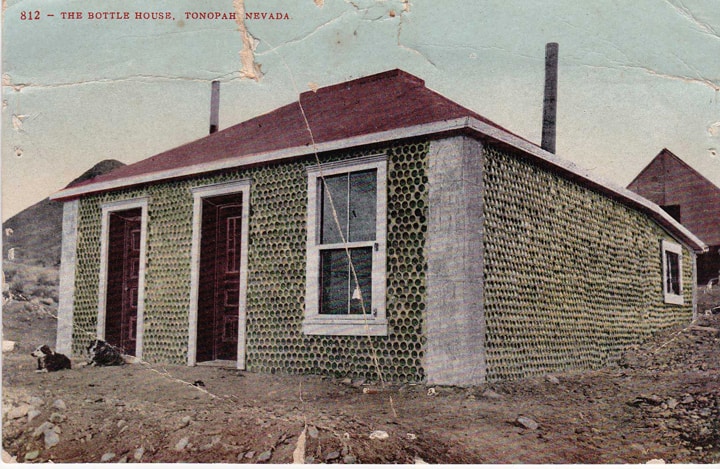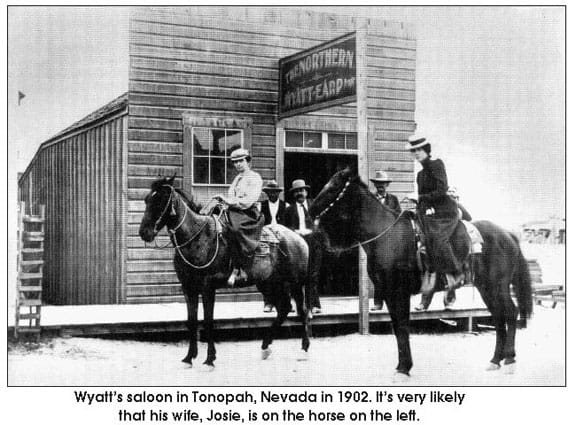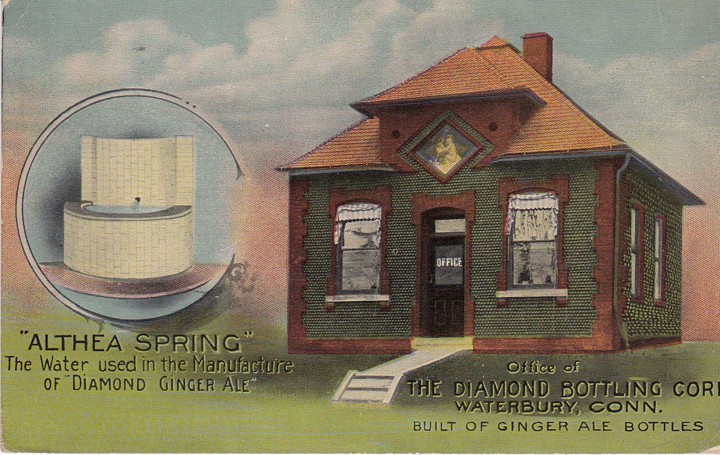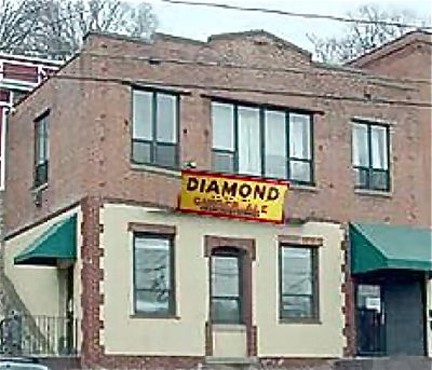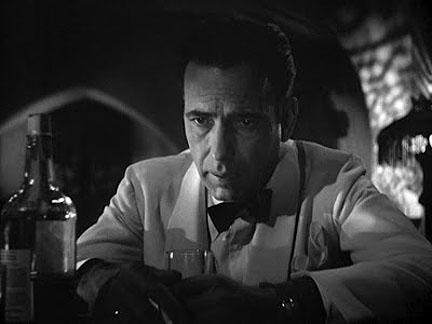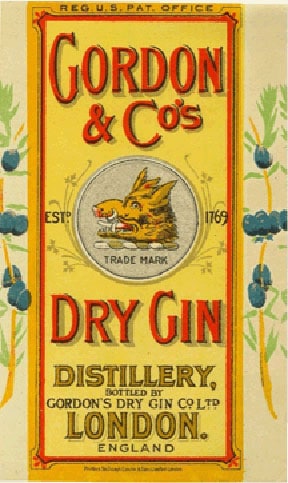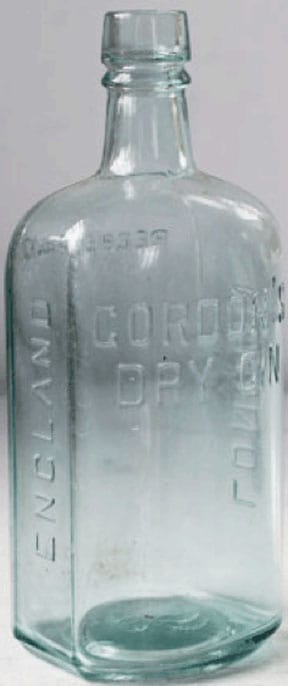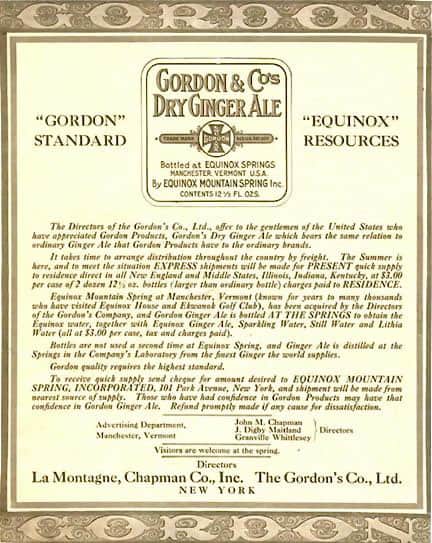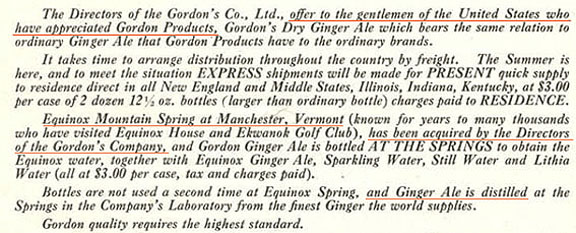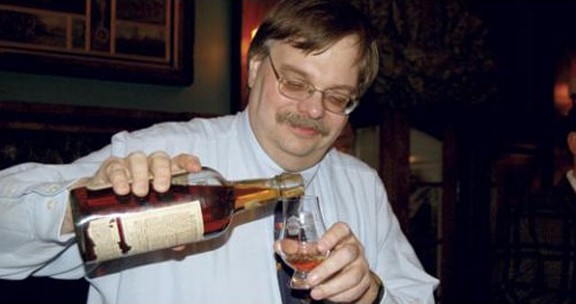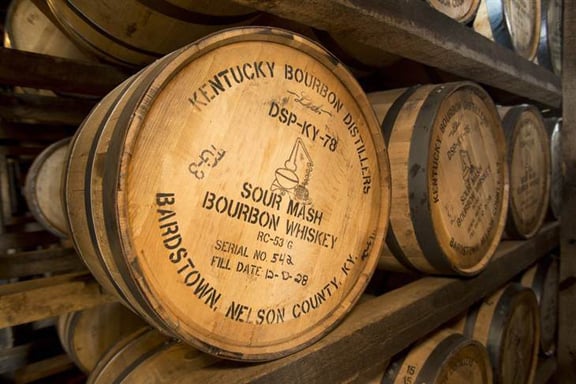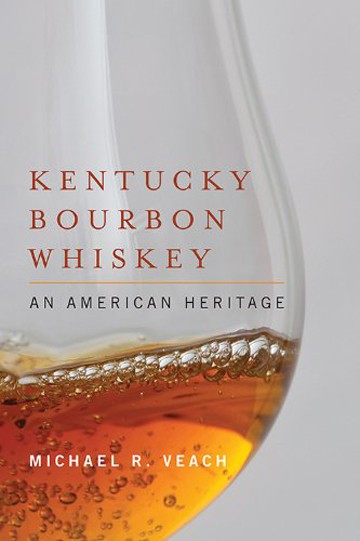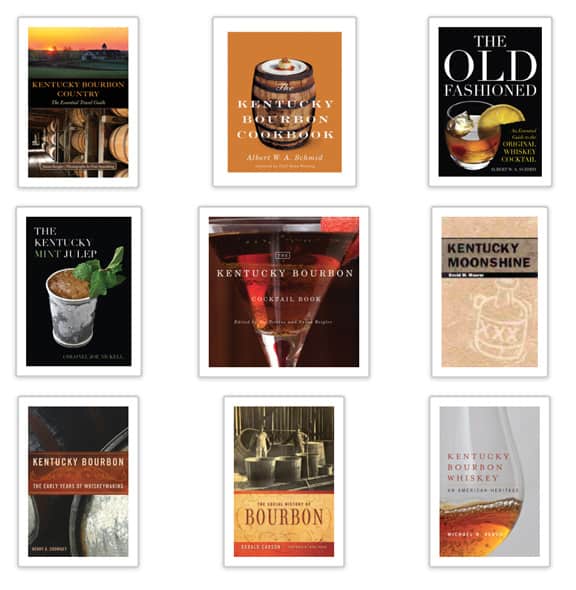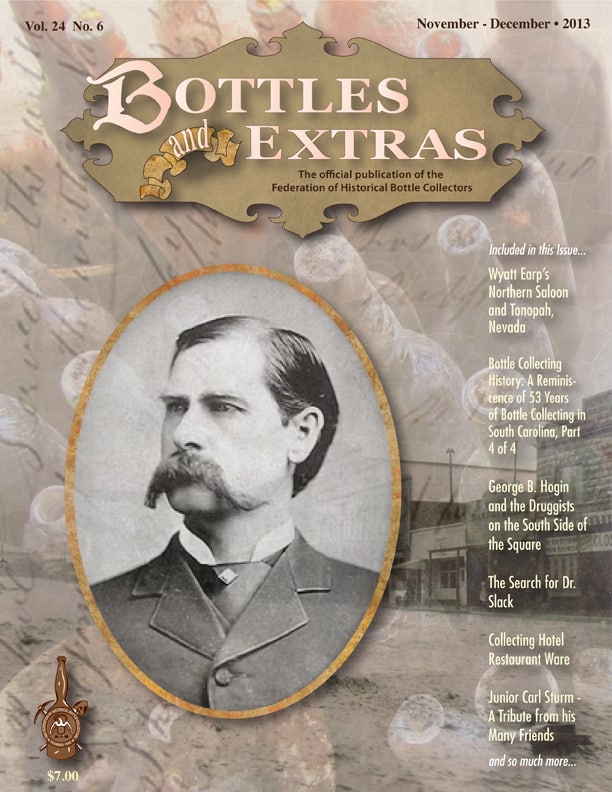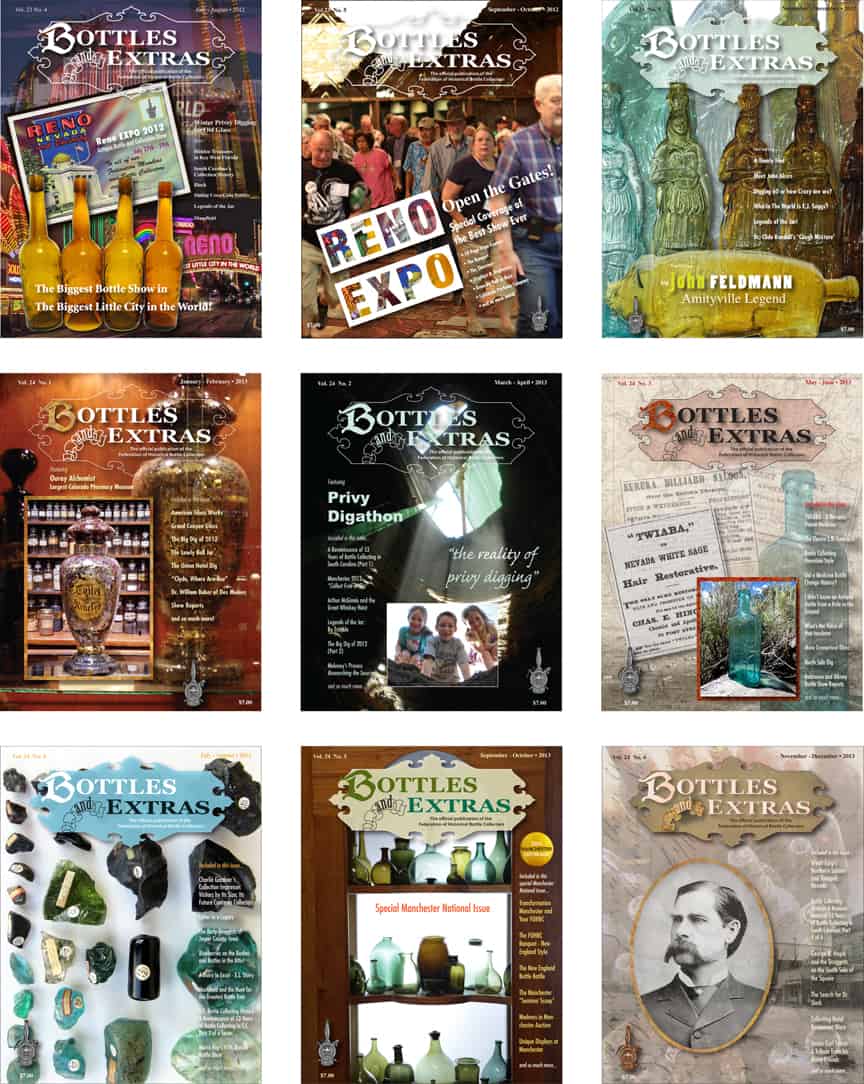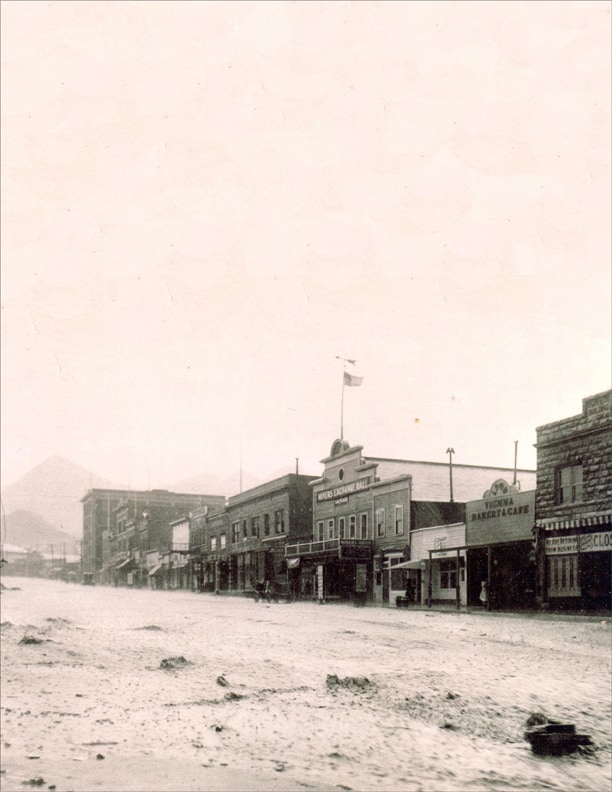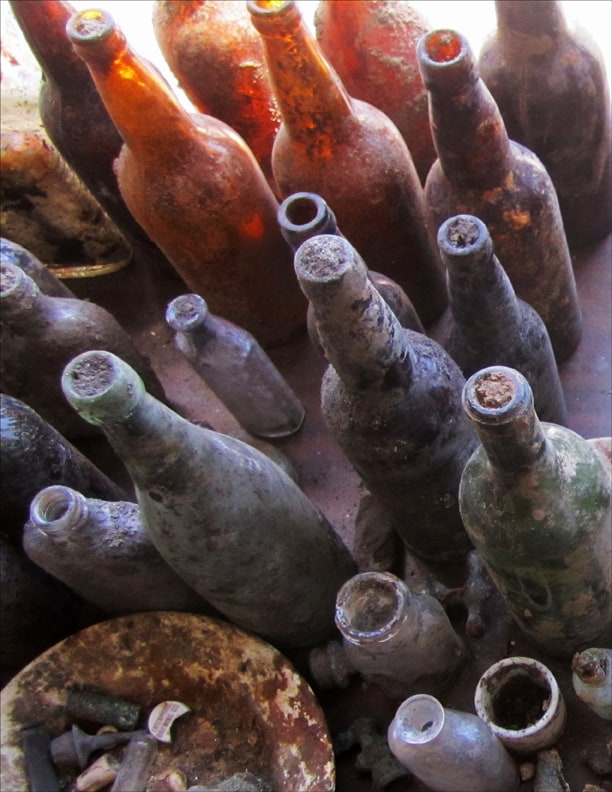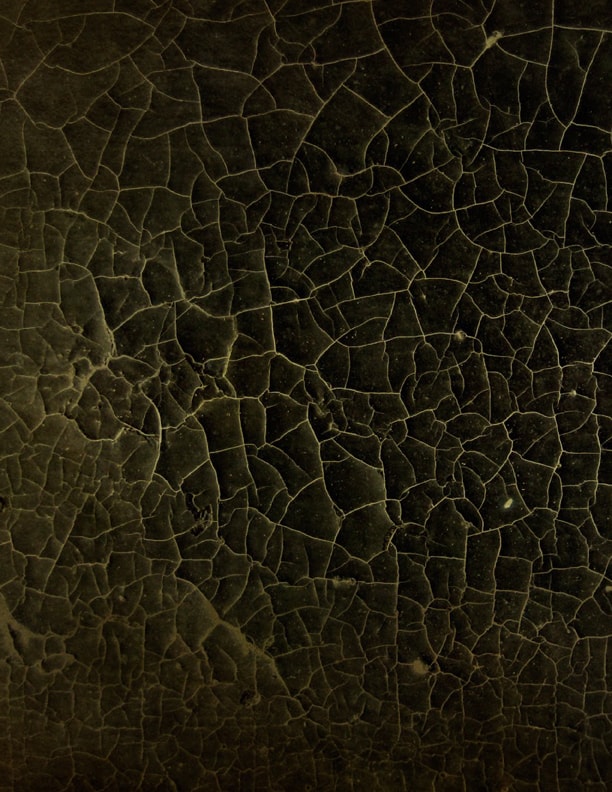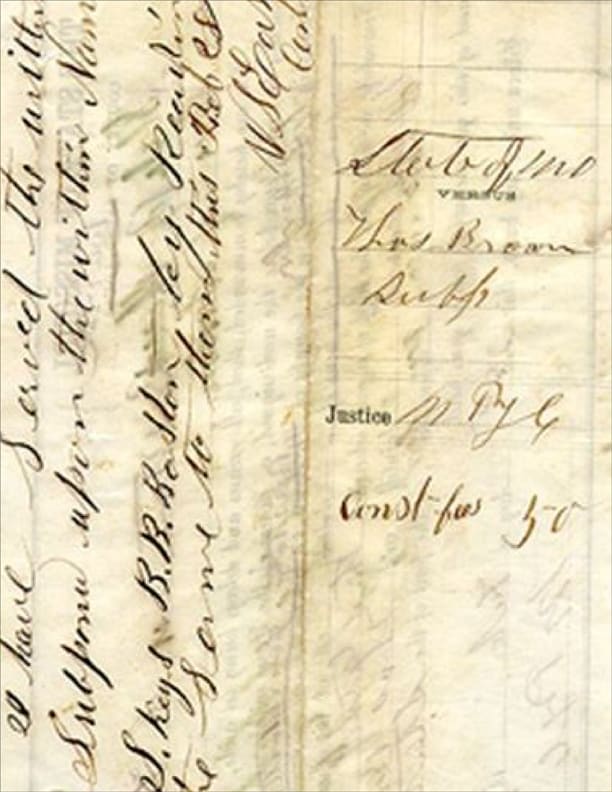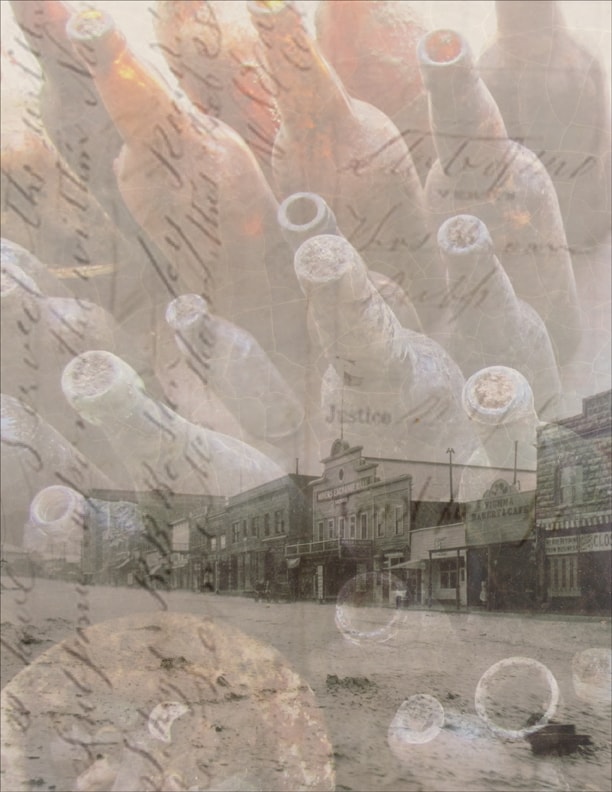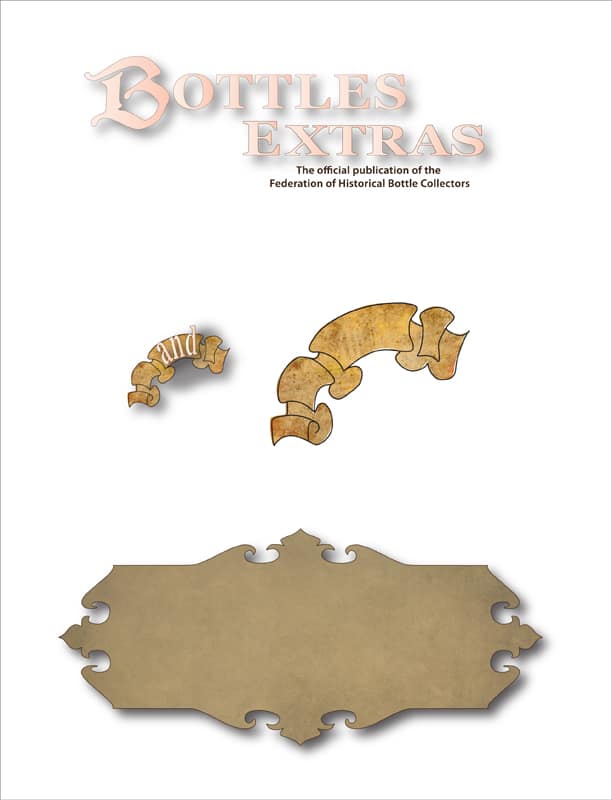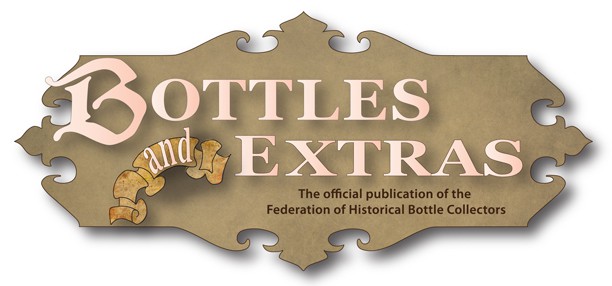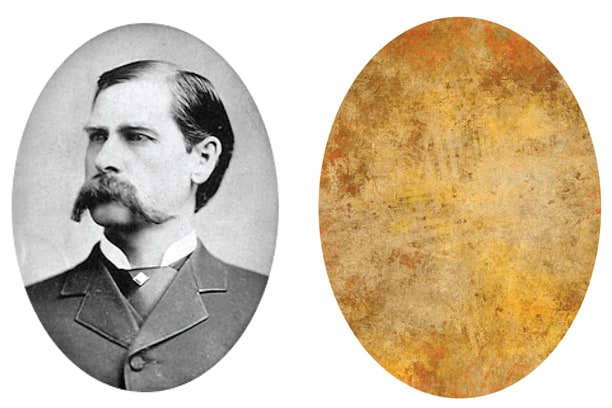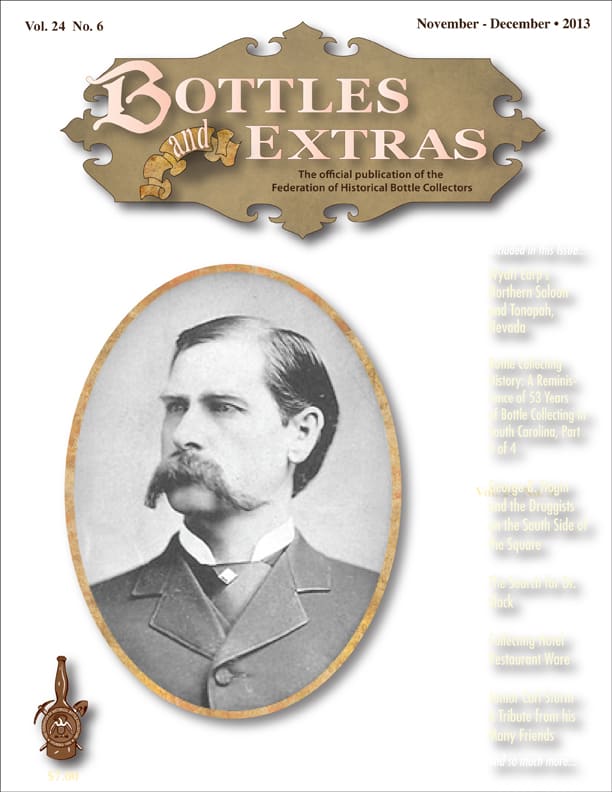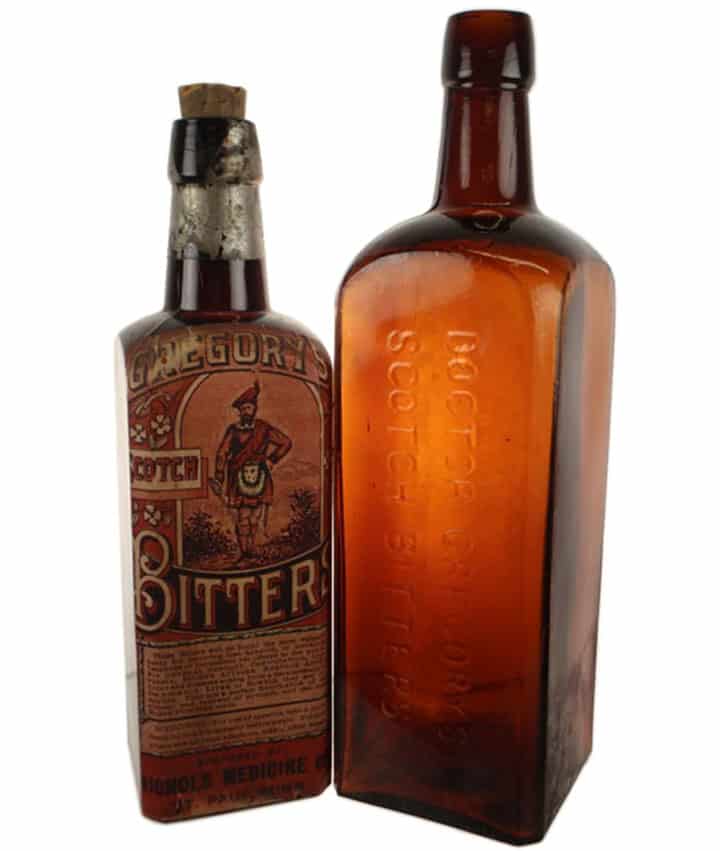
Gregory’s Scotch Bitters
Minneapolis, Minnesota
18 October 2013 (R•101913 – Ketcham material) (R•091416) (R•041117)
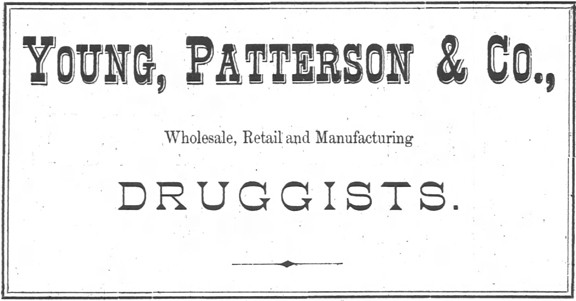
Prominent among their specialties is the Celebrated Gregory’s Scotch Bitters of which they are the sole manufacturers and which is having a most flattering sale.
Young & Patterson Co., Minneapolis, Minn.
 It is funny how things happen sometimes when I am doing online bitters work. In this case, I was researching the Bismarck Bitters from New York and I had a hit on an obscure, Gregory’s Scotch Bitters being sold in Bismarck, North Dakota in 1877 by Young & Patterson & Co. from Minneapolis, Minnesota (see advertisement below). Wow, I haven’t been to virtual North Dakota or Minneapolis in some time! As it turns out, this advertsement is for the extremely rare, G 114, Dr. Gregory’s Scotch Bitters listed in Bitters Bottles by Carlyn Ring and Bill Ham. There are also other Gregory’s Scotch Bitters listings in Bitters Bottles in Minneapolis for a Spink & Co., Spink & Keyes Drug Company and Nichols Medicine Co. (St. Paul). They must all be related and linear in time relationship. I just need to figure out in what order. And guess what, I do not have any examples. Hmmmm.
It is funny how things happen sometimes when I am doing online bitters work. In this case, I was researching the Bismarck Bitters from New York and I had a hit on an obscure, Gregory’s Scotch Bitters being sold in Bismarck, North Dakota in 1877 by Young & Patterson & Co. from Minneapolis, Minnesota (see advertisement below). Wow, I haven’t been to virtual North Dakota or Minneapolis in some time! As it turns out, this advertsement is for the extremely rare, G 114, Dr. Gregory’s Scotch Bitters listed in Bitters Bottles by Carlyn Ring and Bill Ham. There are also other Gregory’s Scotch Bitters listings in Bitters Bottles in Minneapolis for a Spink & Co., Spink & Keyes Drug Company and Nichols Medicine Co. (St. Paul). They must all be related and linear in time relationship. I just need to figure out in what order. And guess what, I do not have any examples. Hmmmm.
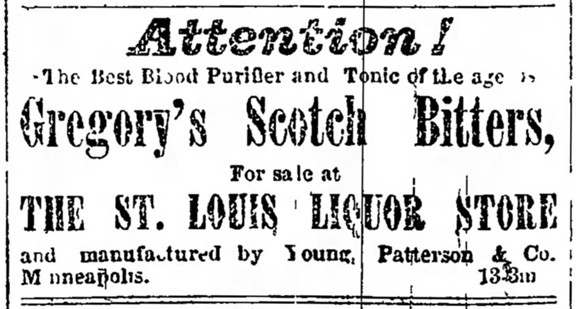
Gregory’s Scotch Bitters (G 114), manufactured by Young, Patterson & Co. advertisement – 1877 Bismarck, North Dakota newspaper ad
The various Carlyn Ring and W.C. Ham Minneapolis listings in Bitters Bottles are as follows:
G 112.6 L … Gregory’s Scotch Bitters
Spink & Keyes Drug Company, Manufacturing Chemist
Minneapolis, Minnesota
9 x 2 5/8 (6 3/4) 1/4
Square, Amber, LTC
In business 1880 – 1896 (should be 1888 – 1901)
Bottle approximately early 1890s.
G 112.8 L … Gregory’s Scotch Bitters
Nichols Medicine Company, St. Paul, Minnesota (maybe Chicago instead)
8 1/8 x 2 3/8 (5 3/4) 1/4
Square, Amber, LTC
In business 1896-1905
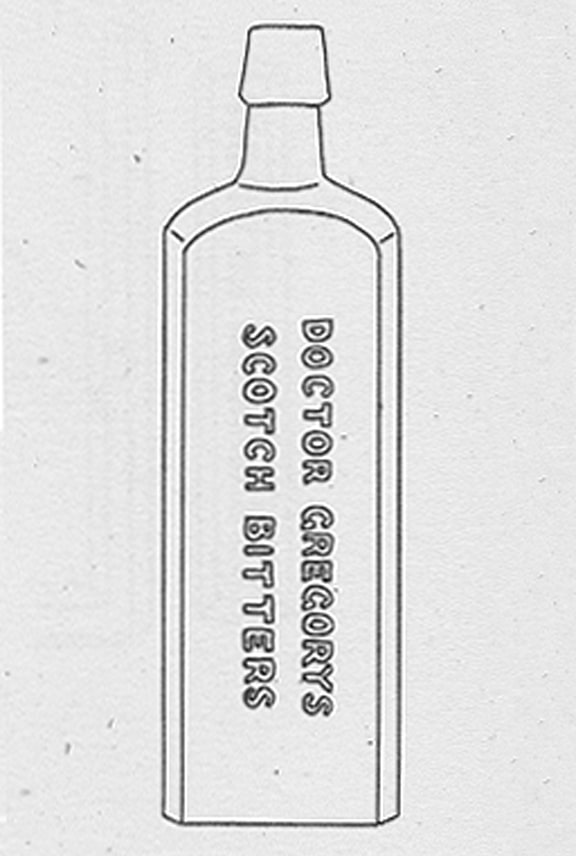
Doctor Gregory’s Scotch Bitters – Ring & Ham Illustration
G 113 DOCTOR GREGORYS / SCOTCH BITTERS // f // f // f // b // I G CO.
Prepared by Spink & Co., Manufacturing Chemist, Minneapolis, Minnesota
9 1/2 x 2 7/8 (7 1/4) 3/8
Square, Amber, LTC, Extremely rare
Trade card: Dr. Gregory’s Scotch Bitters is the finest tonic and blood purifier in use.
Sold 1875 – 1885 (should be 1888) in Minneapolis
Trade Mark August 1877, Gregory’s Scotch Bitters (no “Doctor”)
G 114 DOCTOR GREGORYS / SCOTCH BITTERS // f // f // f //
Young, Patterson & Co., Minneapolis, Minnesota
8 3/4 x 2 3/8 (7) 3/8
Square, Amber, LTC, Extremely rare
Drug Catalog: 1878-79 Prominent among their specialities is the celebrated Gregory’s Scotch Bitters of which they are the sole manufacturer and which is having a most flattering sale.

“Doctor Gregorys / Scotch Bitters” Bottle, Ihmsen Glass Company, Pittsburgh, Pennsylvania, 1860-1880. Square with beveled corners, medium amber, applied sloping collared mouth – smooth base embossed “IGCO”, ht. 9 3/8 inches; (pinpoint flake from mouth edge, lower interior half of bottle has content haze). R/H #G-113 Listed as extremely rare. Crude whittled surface and strong embossing. Generally fine condition. – Heckler Premier Auction #141.
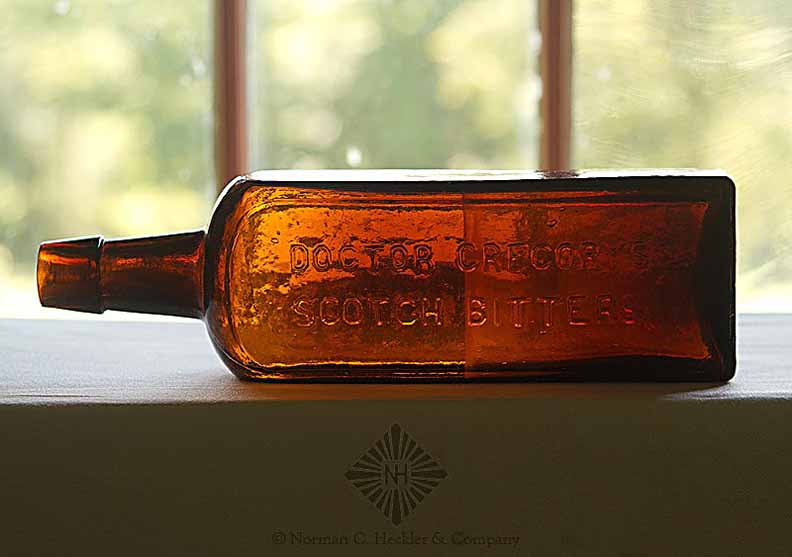
“Doctor Gregorys / Scotch Bitters” Bottle, Ihmsen Glass Company, Pittsburgh, Pennsylvania, 1860-1880. Square with beveled corners, medium amber, applied sloping collared mouth – smooth base embossed “IGCO”, ht. 9 3/8 inches; (pinpoint flake from mouth edge, lower interior half of bottle has content haze). R/H #G-113 Listed as extremely rare. Crude whittled surface and strong embossing. Generally fine condition. – Heckler Premier Auction #141.
We have made arrangements whereby all of our specialities (6 in number) will be kept for sale by all wholesale and retail druggists and by most of the country storekeepers throughout the West. Mail orders promptly filled.
“From putting up only a few dozen for the retail trade about three years ago, their trade increased to 500 dozen in 1877, and will probably reach at least 1000 dozen for the present year.”
1878 Young, Patterson & Co. Almanac
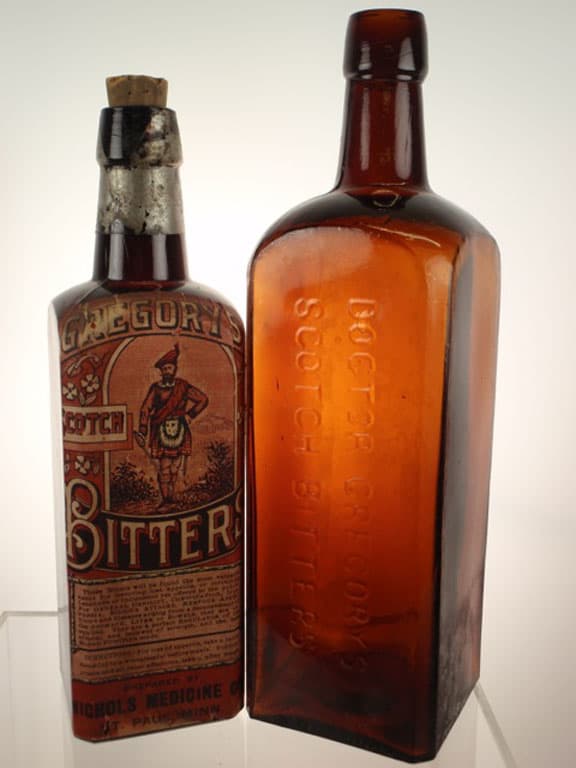
The paper labeled Gregory’s Scotch Bitters at left is one of a case of the bottles which a lady brought to a North Star Historical Bottle Assn. meeting back in 1974. She wished to sell them, and the members present that night were more than happy to buy them. The embossed Doctor Gregory’s Scotch Bitters at right was dug in the back yard of an old cabin-turned-home on the shores of Lake Minnetonka just west of Minneapolis. It is bottom signed I. G. Co. – Steve Ketcham Collection
Tracking the brand and proprietors online, we can find the following historical listings and advertisements:
1848 – Levi N. Patterson was born in Oneida county, New York, in 1848. History of Hennepin County and The City of Minneapolis
1872 – Levi N. Patterson came to Minnesota in 1854, and located at Mankato, where he passed his youth, and learned the drug business in St. Peter with Henry Jones. In 1872, located in this city and worked in a drug store until 1874, when he became a partner in the firm of Young, Patterson and Company, but sold his interest five years later. History of Hennepin County and The City of Minneapolis
1874 – Jas. L. Spink, Proprietary Medicines illustration of storefront (see illustration below)
1875 – Young, Patterson & Co., (Hugh J. Young, L. N. Patterson), druggists, 44 S. Washington av. Minneapolis City Directory

Young, Patterson & Co. listing – Minneapolis City Directory – 1875
1875 – Schooling for Horace Mann Hill, Allen’s only surviving son, also ended at the age of fourteen. He, too, was a fine scholar, but he needed to help support his parents and opted to go to work as a clerk in a furniture store (where he was employed for a few months) and in the position as bookkeeper at D. M. Gilmore & Co. and at Young, Patterson & Co., Hill Family, Chapter Nine
1877 – Trade Mark August 1877, Gregory’s Scotch Bitters (no “Doctor”)
1877 – Gregory’s Scotch Bitters advertisement, Young, Patterson & Co. – Bismarck, North Dakota newspaper
1878-79 – Drug Catalog: Prominent among their specialities is the celebrated Gregory’s Scotch Bitters of which they are the sole manufacturer and which is having a most flattering sale.
1878 – Gregory’s Scotch Bitters advertisements, Young, Patterson & Co. – Minnesota, North and South Dakota and Montana Gazetteer and Business Directory, City Directories for Minneapolis, Minnesota
1878 – Young, Paterson & Co. Almanac advertising Gregory’s Scotch Bitters, “From putting up only a few dozen for the retail trade about three years ago, their trade increased to 500 dozen in 1877, and will probably reach at least 1000 dozen for the present year.”
1879 – Gregory’s Scotch Bitters, Internal Revenue Record and Customs Journal
1880 – Levi N. Patterson, of the firm of Patterson and Chilstrom, druggists, In October, 1880, the present firm was formed and has since continued. He was married in 1875 to Eva M. Tibbetts, of Mankato. They have one child. Russ. Mr. Patterson’s father was one of the pioneers of Blue Earth county, and was a member of the legislature at the time of his death in 1861. – History of Hennepin County and The City of Minneapolis
1880 – Spink & Co. (J L Spink and —), whol. druggists, 716 S 6th, Minneapolis City Directory
1884 – Spink J L. proprietary medicines 716 S 6th, Minneapolis City Directory
1885 – Spink & Co. (Jas L. Spink and —) prop medicines 716 S 6th, Minneapolis City Directory
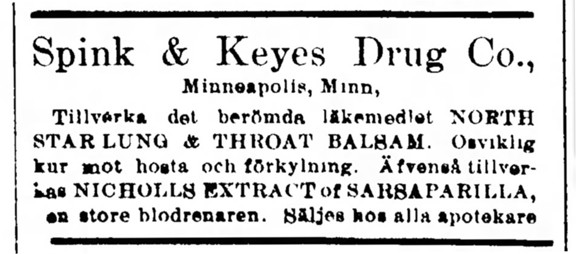
Spink & Keyes Drug Co., advertisement – Nya Verlden, 14 August 1891
1888 – Spink & Keyes Drug Co., Minneapolis, Minnesota. Incorporated April 13, 1888, Capital, $25,000. James L. Spink, Pres.; Charles W.Keyes, Sec. and Treas. 204 Washington avenue north, Incorporated Companies.
1899 – Charles F. Keyes has been appointed receiver for Spink & Keyes Drug Co., Minneapolis, The Pharmaceutical Era, Volume 21
1891 – Spink & Keyes Drug Co., Minneapolis, Minnesota, Nya Verlden
1891 – Charles F. Keyes has been appointed receiver for the Spink & Keyes Drug Co., Minneapolis.
1901 – Spink & Keyes Drug Co., Minneapolis, Court of Appeals, State of New York
1902 – Nichols Drug Co., 526 Rialto Bldg. Chicago, Ill., The Druggist Circular and Chemical Gazette.
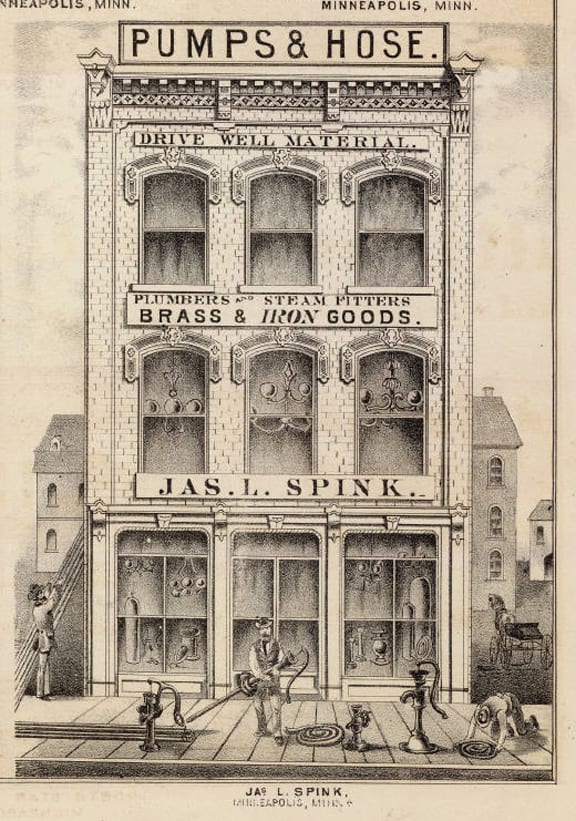
James L. Spink, Proprietary Medicines on street level – Grimshaw and Town, Jas. L. Spink, Richardson’s Livery, Boarding & Sale Stable, C.E. Whelpley, O.E. Spear Shop, Union Paint Shop, Minneapolis, Minn. – David Rumsey Map Collection – 1874
Gregory’s Scotch Bitters Advertising
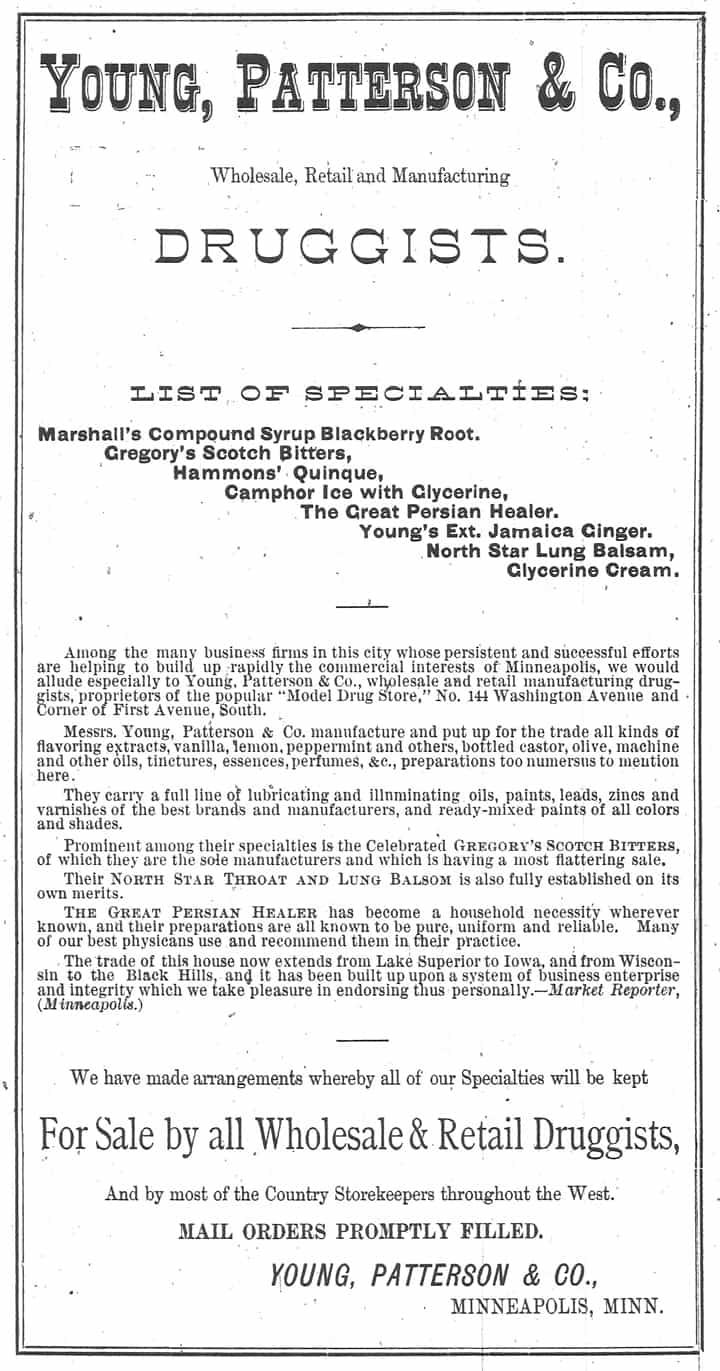
Young, Patterson & Co., Gregory’s Scotch Bitters (G 114) advertisement – City Directories for Minneapolis, Minnesota – 1878
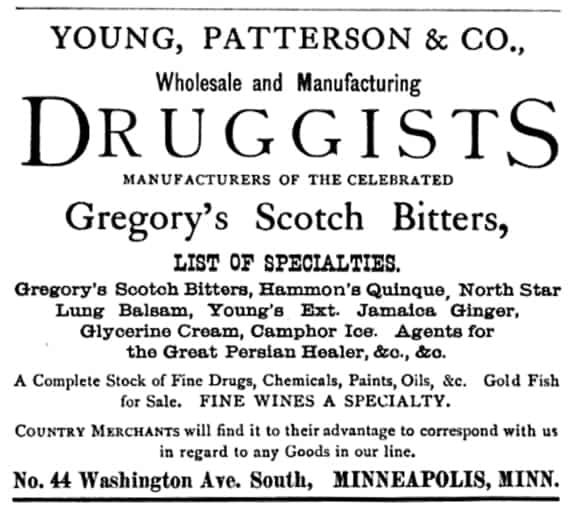
Gregory’s Scotch Bitters (G 114), Young, Patterson & Co., advertisement – 1878 Minnesota, North and South Dakota and Montana Gazetteer and Business Directory
Young, Patterson & Co. Almanac
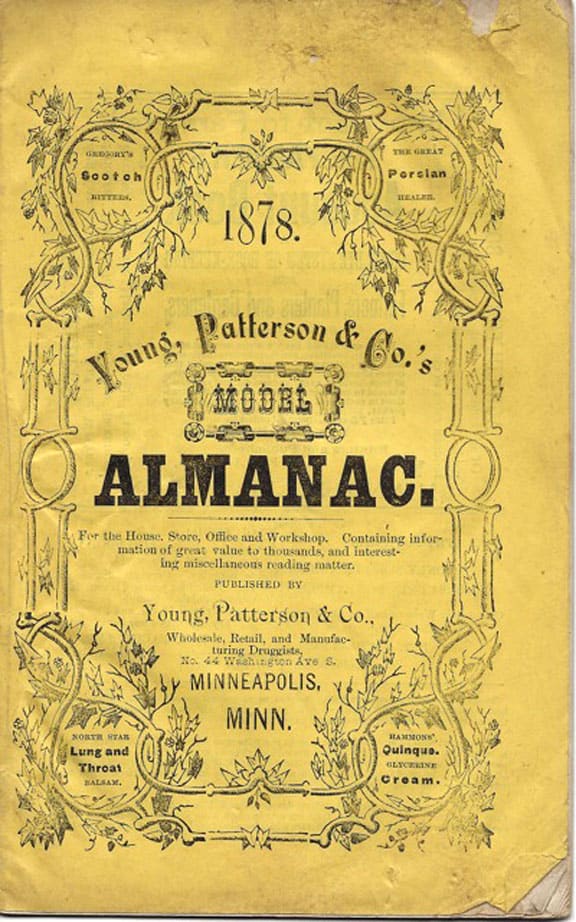
1878 Young, Patterson & Co. Almanac, Gregory’s Scotch Bitters noted upper left corner. – Steve Ketcham Collection
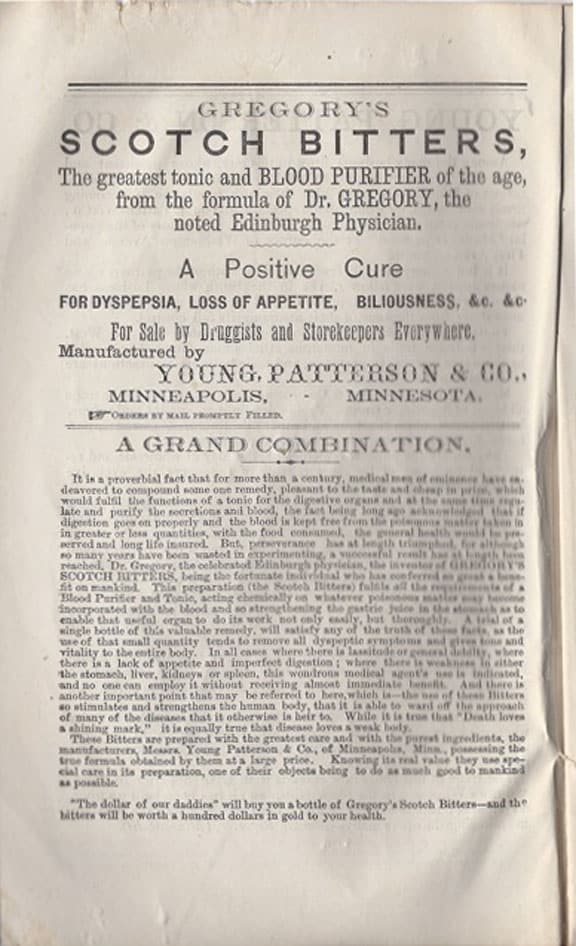
Select page – 1878 Young, Patterson & Co. Almanac noting Gregory’s Scotch Bitters – Steve Ketcham Collection
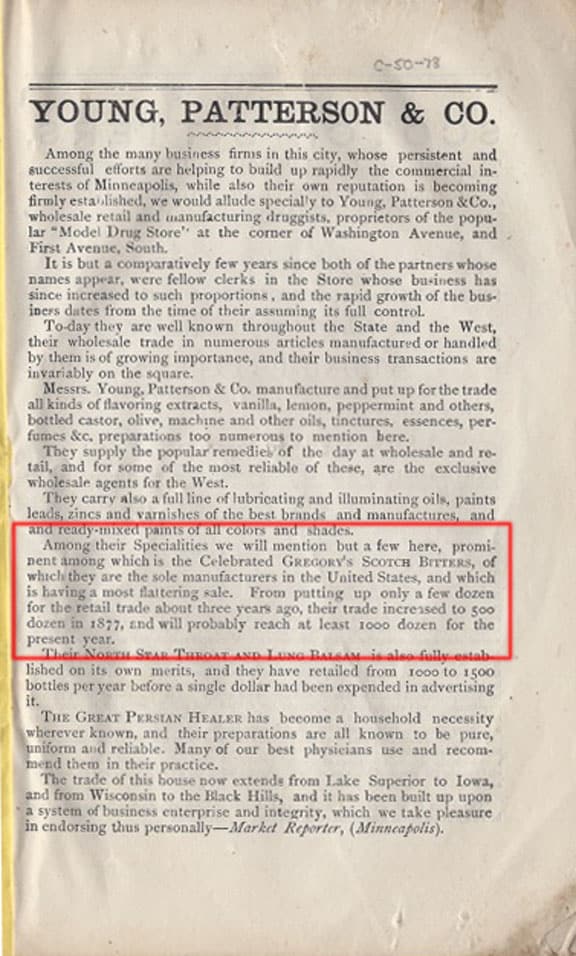
Select page – 1878 Young, Patterson & Co. Almanac noting Gregory’s Scotch Bitters. Fourth paragraph from the bottom, discusses how the firm is the sole manufacturer of the bitters and has grown the product: “From putting up only a few dozen for the retail trade about three years ago, their trade increased to 500 dozen in 1877, and will probably reach at least 1000 dozen for the present year.” – Steve Ketcham Collection
Gregory’s Scotch Bitters Trade Cards
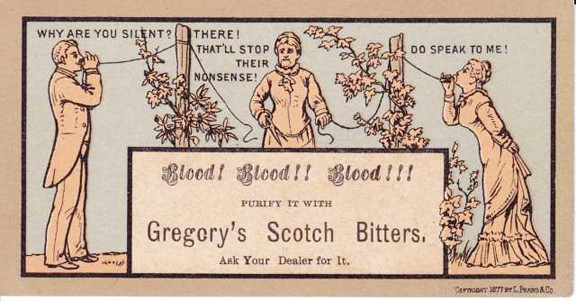
Gregory’s Scotch Bitters trade card (see two more below in series). Unsure as to which exact brand and proprietor this relates to though probably G112.6L. Look at the early telephone line. Alexander Graham Bell was the first to be awarded a patent for the electric telephone by the nited States Patent and Trademark Office in March 1876. Lithographer is Louis Prang & Co., 1877 – Joe Gourd Collection
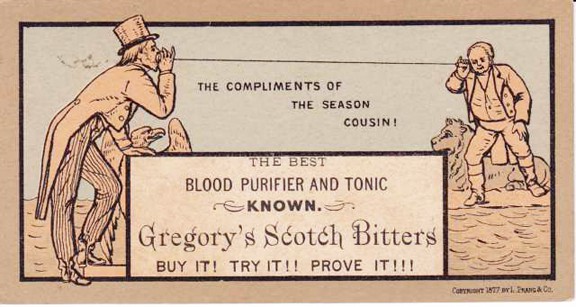
Gregory’s Scotch Bitters trade card. Image shows Uncle Sam (with Eagle) conversing with John Bull (with Lion) who is the national personification of the United Kingdom in general, and England in particular over the Transatlantic cable. See the water. The Transatlantic cable dates to 1855. Lithographer is Louis Prang & Co., 1877 – Joe Gourd Collection
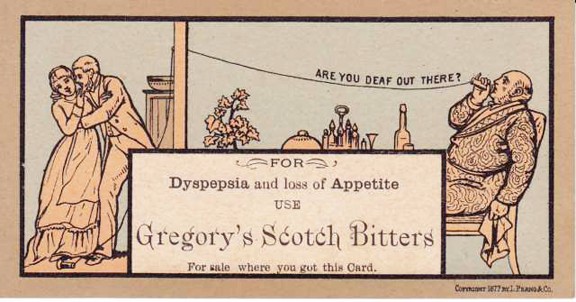
Gregory’s Scotch Bitters trade card. Look at the early telephone line. Lithographer is Louis Prang & Co., 1877 – Joe Gourd Collection
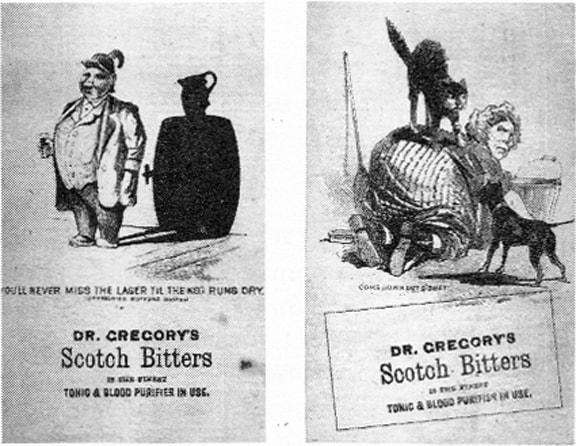
Dr. Gregory’s Scotch Bitters – Ring & Ham illustrations. Notice the different art style with the illustrations. Similar verbiage.
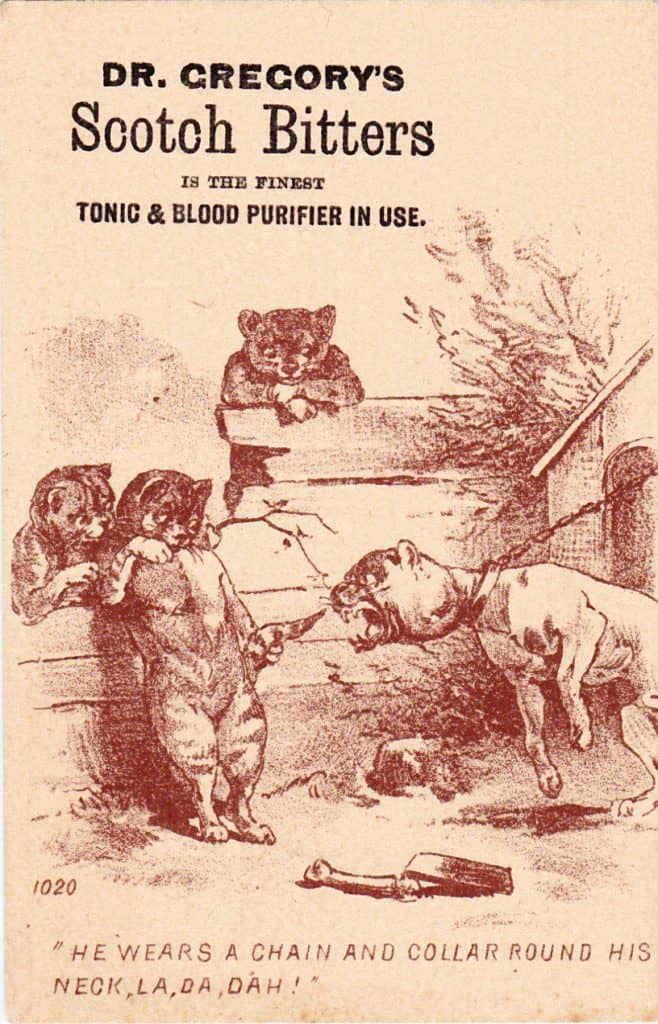
Dr. Gregory’s Scotch Bitters – Joe Gourd Collection
![]() Earlier in the month we visited Fond du Lac, Wisconsin and looked at the Indian Blood Bitters and earlier today I posted on the Ritz’s Juniper & Wild Lemon Bitters from Milwaukee. Now we can look at another extremely rare bitters from Wisconsin, the Dr. Warren’s Universal Tonic Bitters from Fond du Lac. *This post was inspired by Mark Nelson who posted a subject example on Facebook.
Earlier in the month we visited Fond du Lac, Wisconsin and looked at the Indian Blood Bitters and earlier today I posted on the Ritz’s Juniper & Wild Lemon Bitters from Milwaukee. Now we can look at another extremely rare bitters from Wisconsin, the Dr. Warren’s Universal Tonic Bitters from Fond du Lac. *This post was inspired by Mark Nelson who posted a subject example on Facebook.